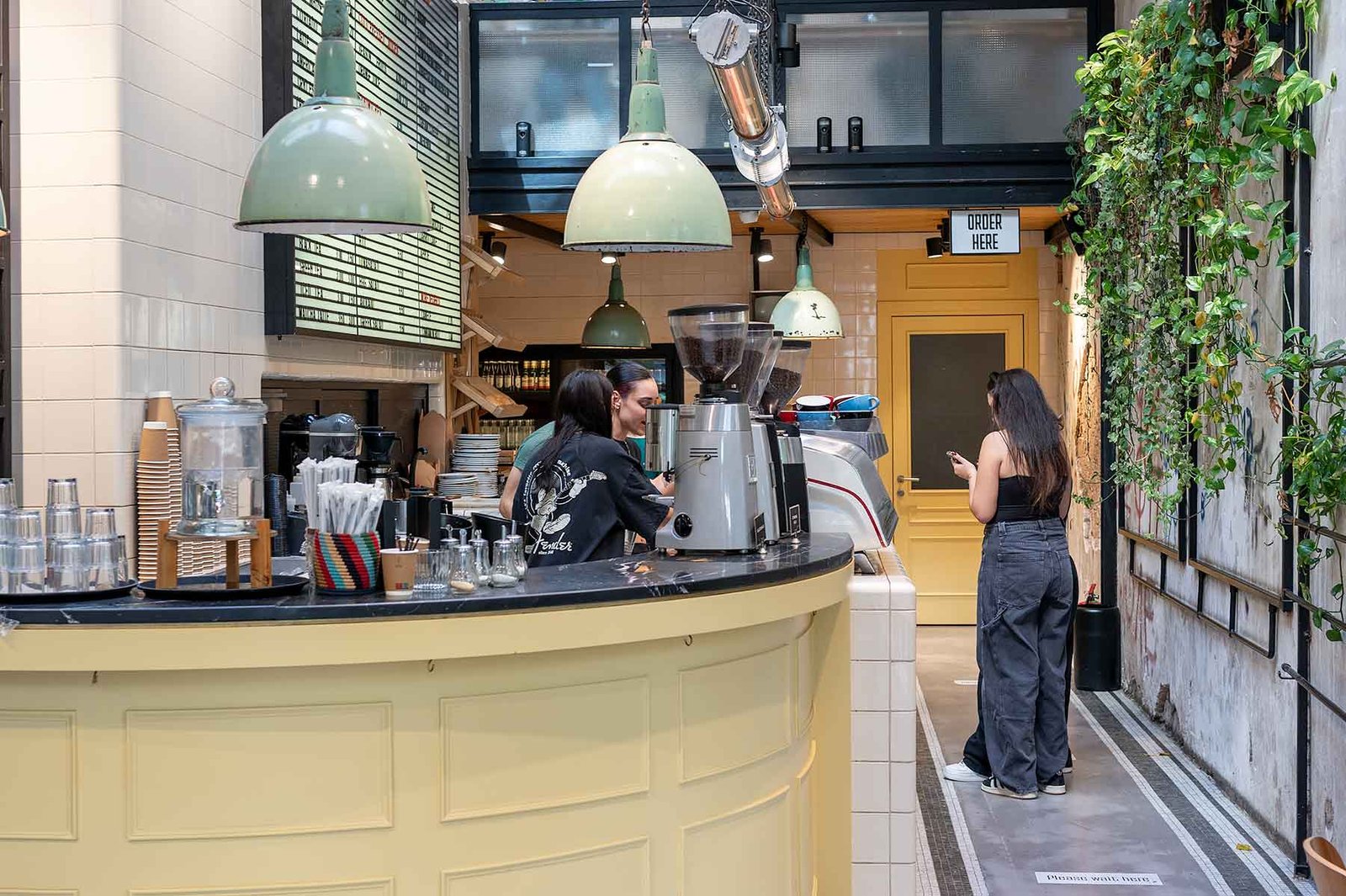This post is also available in:
![]() Nederlands (Dutch)
Nederlands (Dutch)
For a European city trip in the off-season, Athens is the perfect destination. I always struggle to decide where to go in October or November for a decent chance at good weather. Turns out that Athens is the answer! A few days of 20-25°C sunshine quickly made me forget we were already wearing winter coats back home.
It was my first time visiting the Greek capital, and during that time I explored the many different neighborhoods with their interesting, iconic sights and great food. In this post, I’m sharing my top tips for the best things to do in Athens, along with some practical tips for getting around the city and my favorite boutique hotels.
1. The Acropolis and the Parthenon
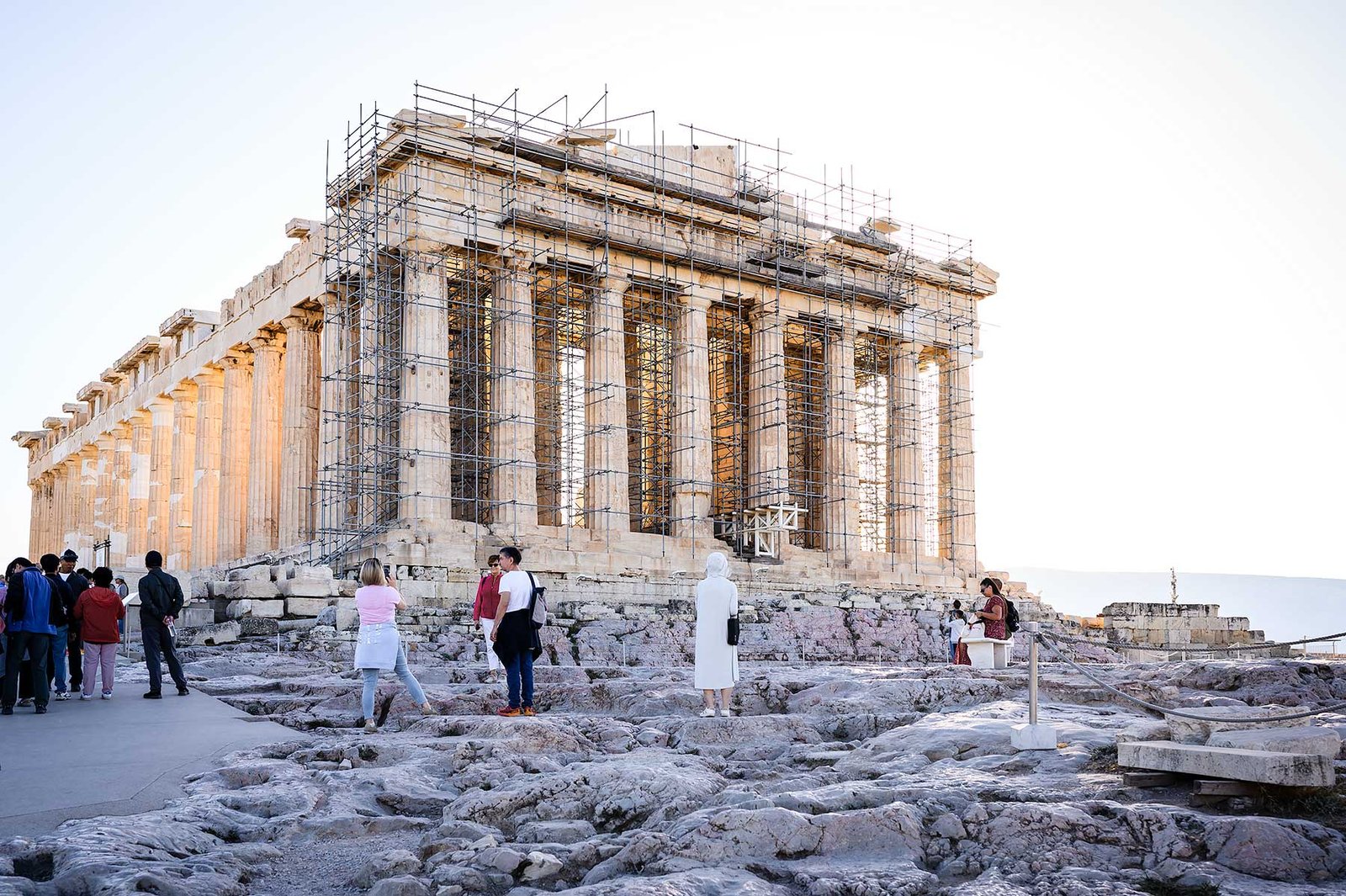
When you think of Athens, chances are the iconic image of the Acropolis and the Parthenon comes to mind. While it’s undeniably the city’s most touristy place to visit, it’s also one you simply can’t skip—especially if it’s your first time in Athens.
The word “Acropolis” comes from Ancient Greek and literally means “high city.” Back in the day, an acropolis was often built on a strategic hill for defense and panoramic views. From here, you have a breathtaking view over the city.
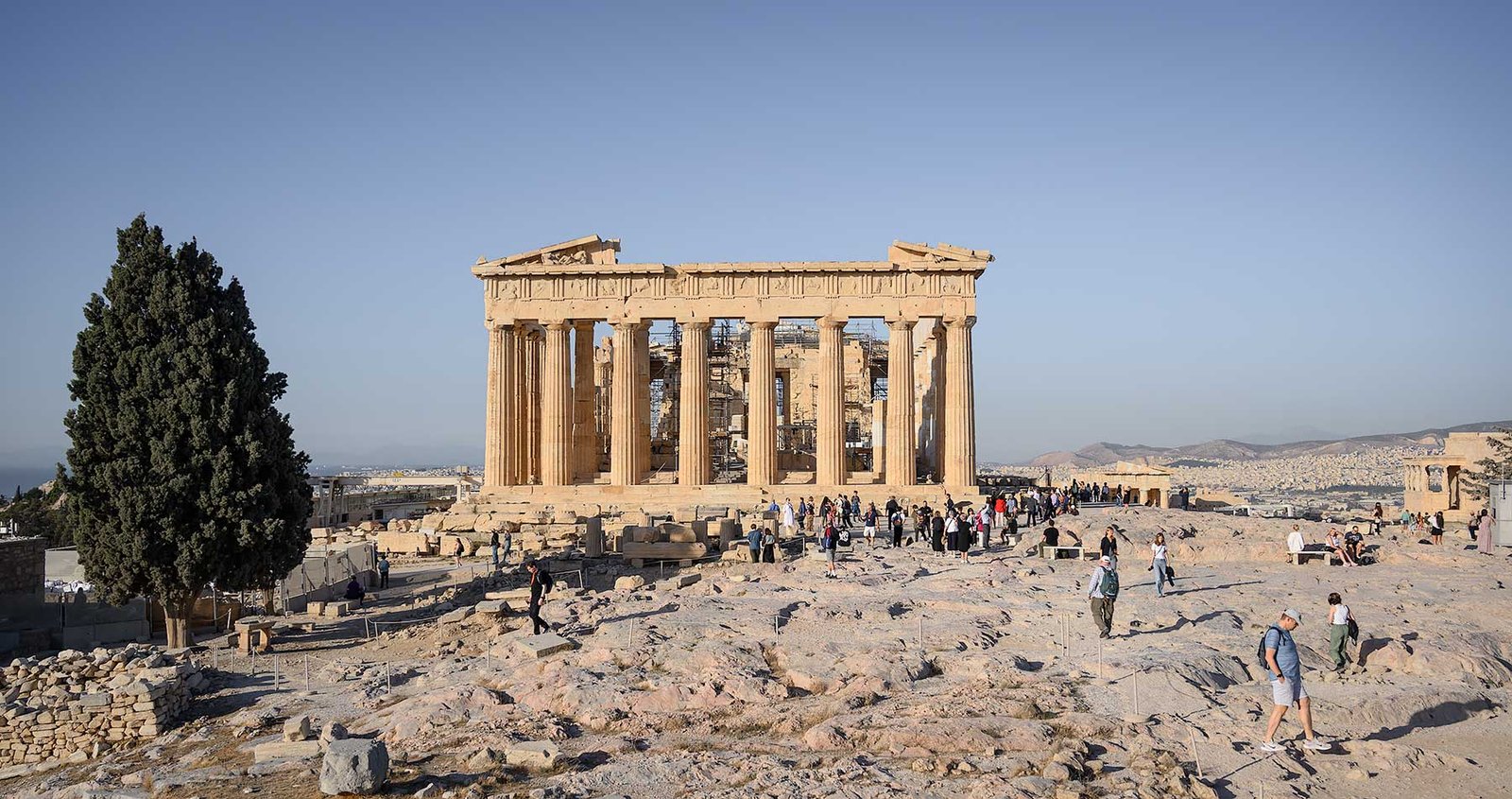
The history of Athens’ Acropolis dates back to the 5th century BC. It served as a religious center and was dedicated to the goddess Athena, the city’s patron deity. The Parthenon, the largest and most famous temple, was built in her honor.
But the Parthenon isn’t the only highlight. Don’t miss the Erechtheion temple with its six iconic statues of women as columns and the Temple of Athena Nike.
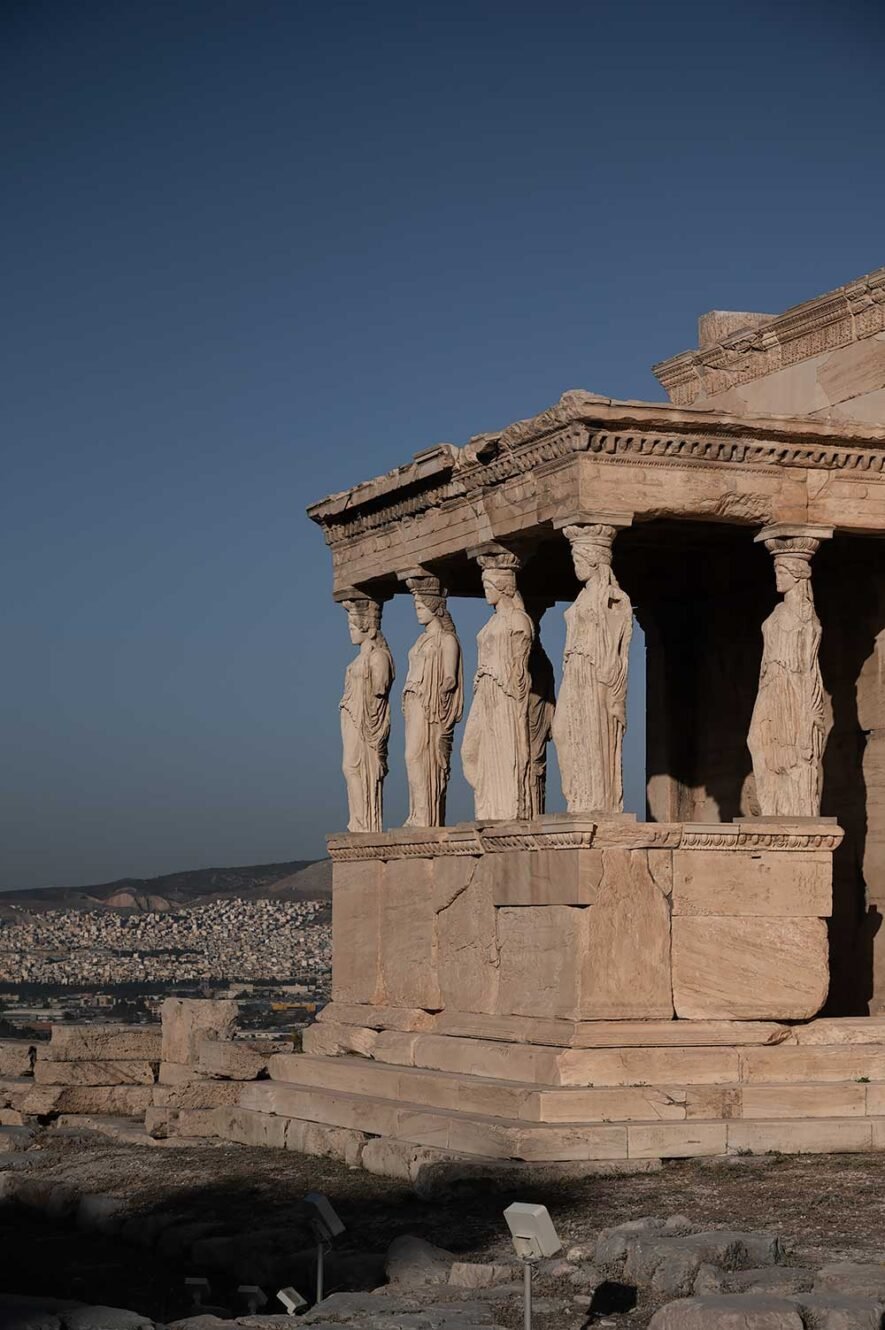
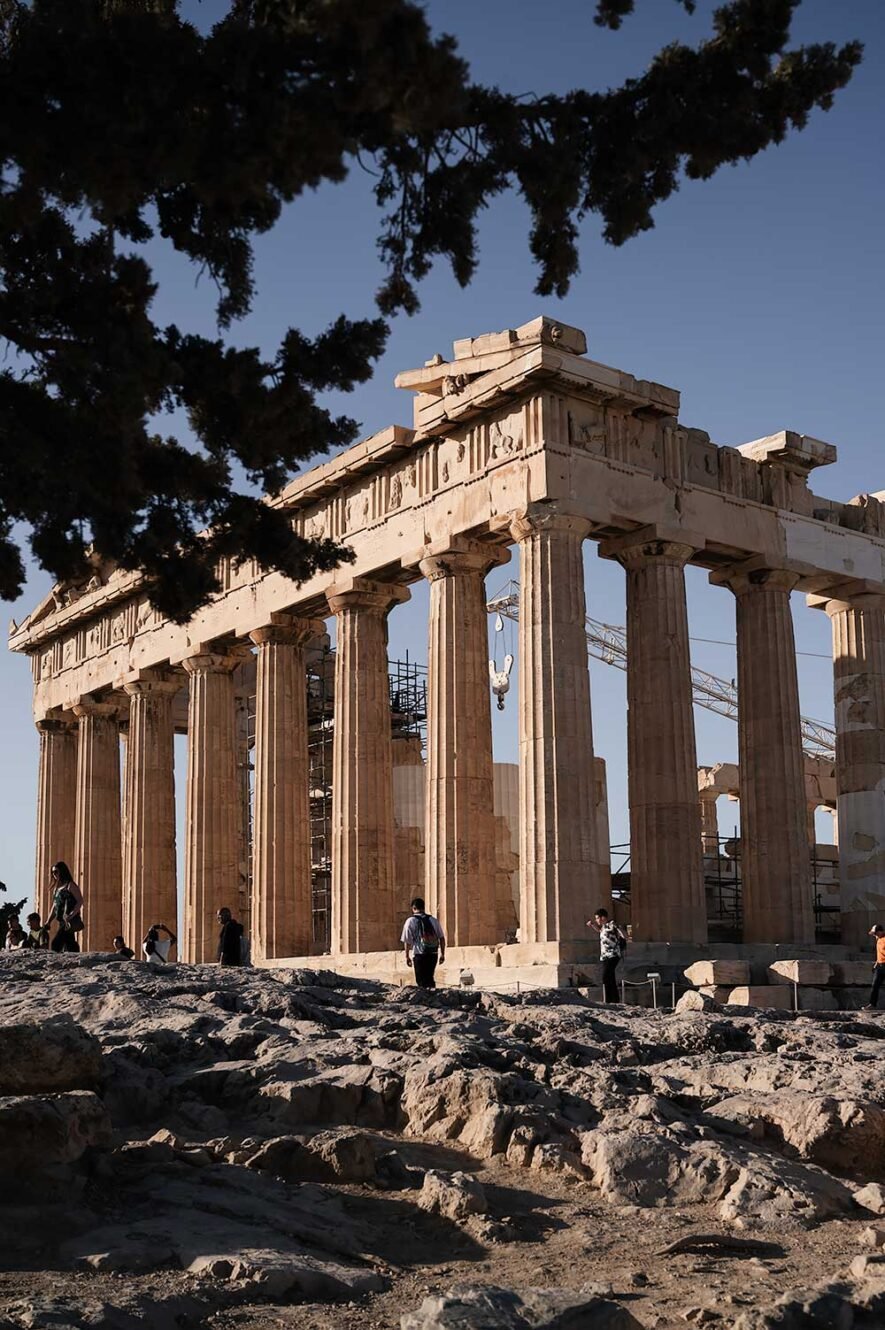
Because of its popularity and efforts to preserve the ruins, the Acropolis has a daily visitor limit. Plan ahead by purchasing your ticket online and reserving a time slot. My tip? Go as early as possible (it opens at 8 a.m.) to beat the crowds—and the heat if you’re visiting in warmer months. Alternatively, head there just before closing time (last entry is at 4:30 p.m.).
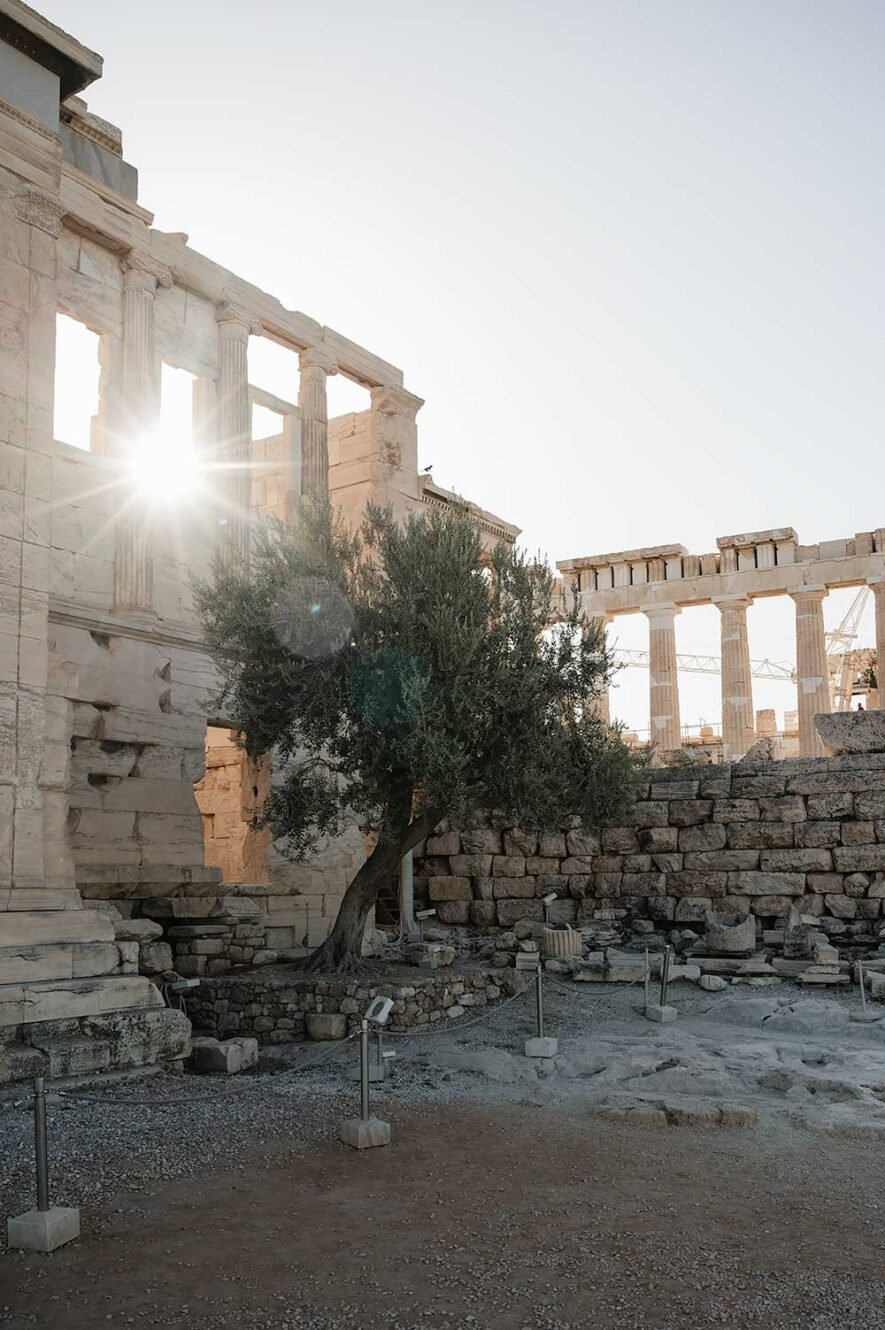
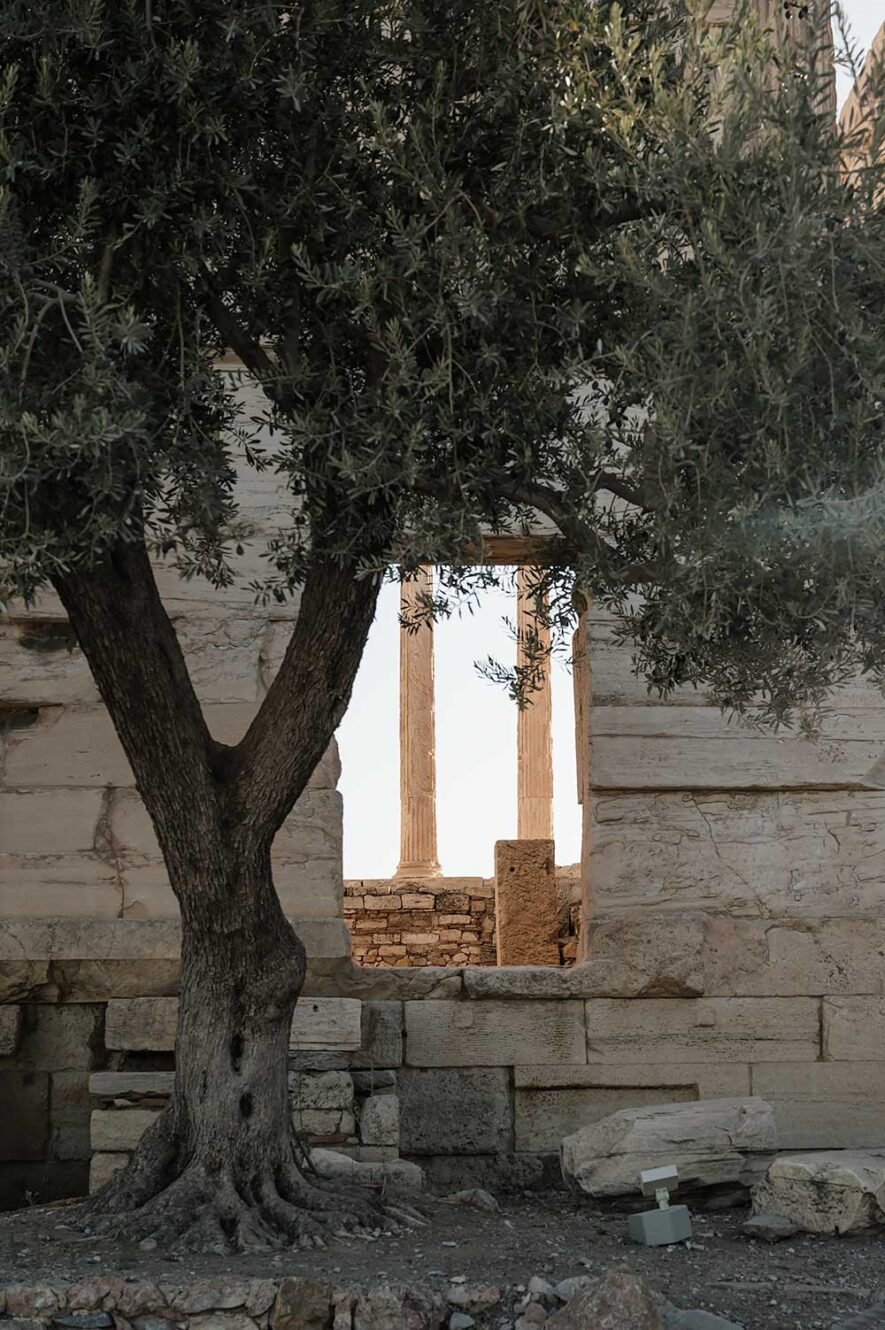
Want to skip the lines? A fast track or “skip-the-line” ticket is your best bet. Even with an online ticket, you might still have to queue to enter. I visited at 8 a.m., and the line moved quickly, but later in the morning, it was completely different.
2. Odeon of Herodes Atticus
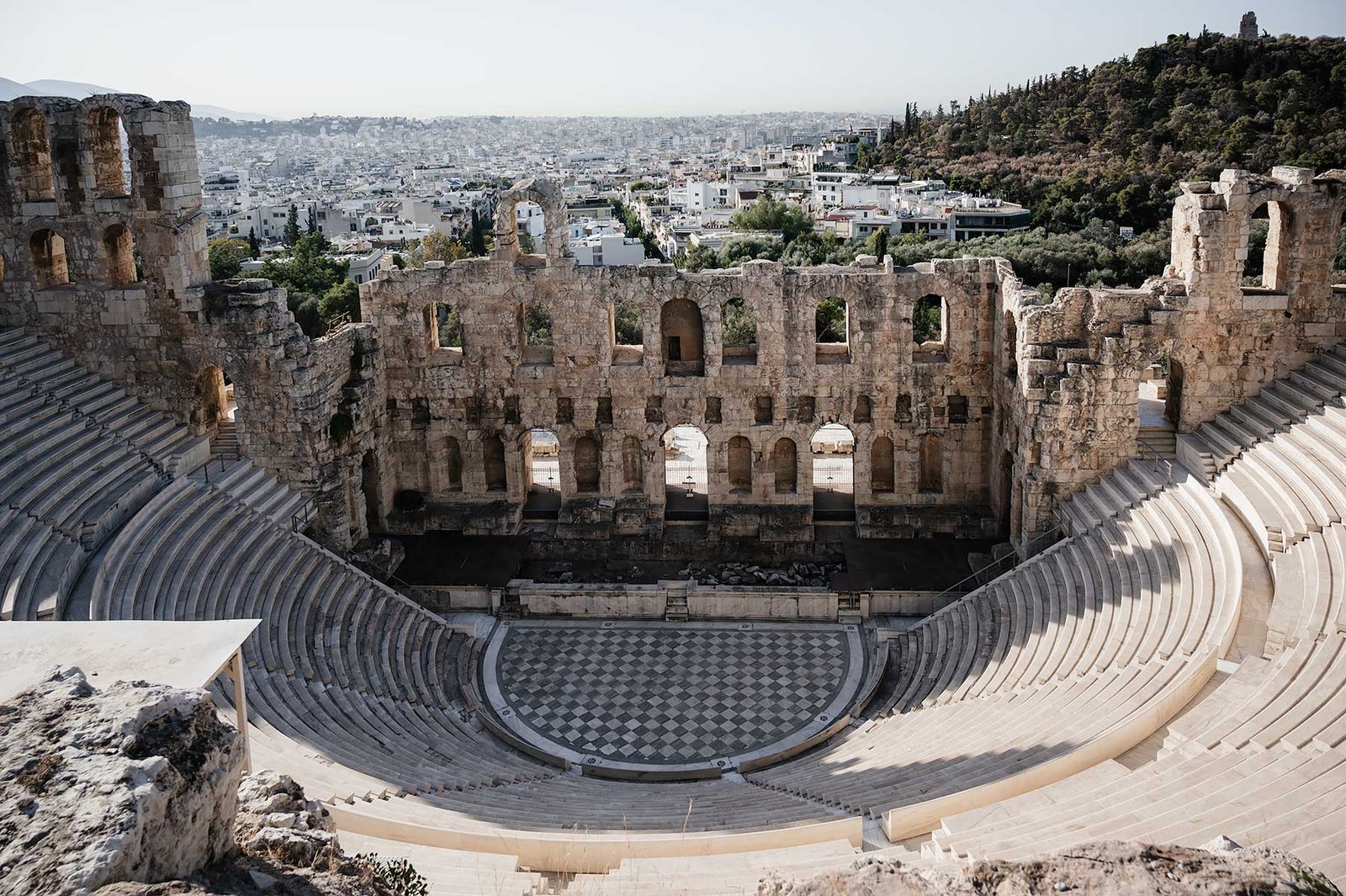
At the foot of the Acropolis, you’ll find another impressive site: the Odeon of Herodes Atticus. It’s included in your Acropolis ticket, so no need to buy a separate one.
Unlike many ancient buildings on the Acropolis that are now fragile ruins, this open-air theater from the 2nd century AD is still in use today. Unfortunately, I missed the cultural season during my visit, but it’s worth checking if you can catch a performance here.
3. Acropolis Museum
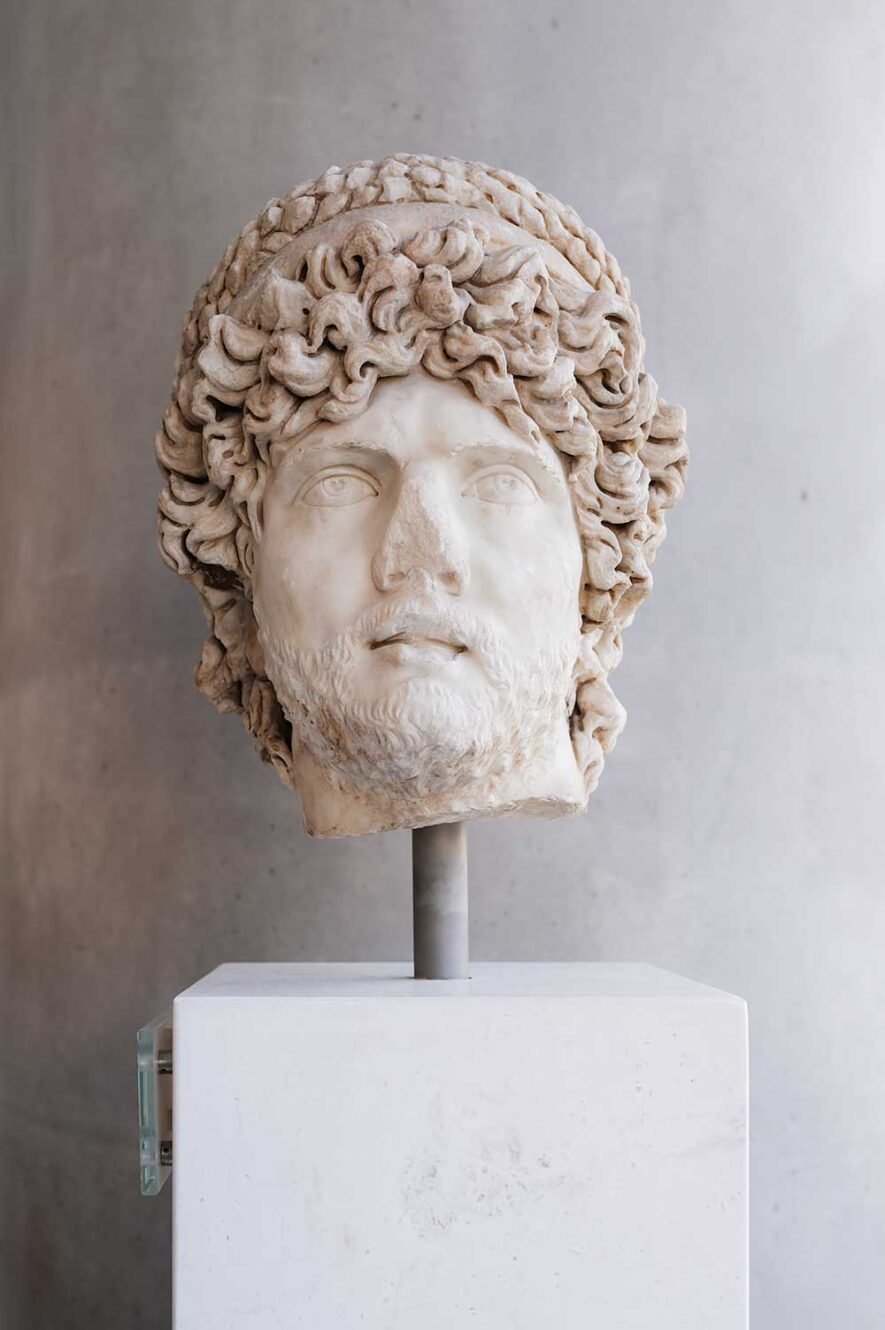
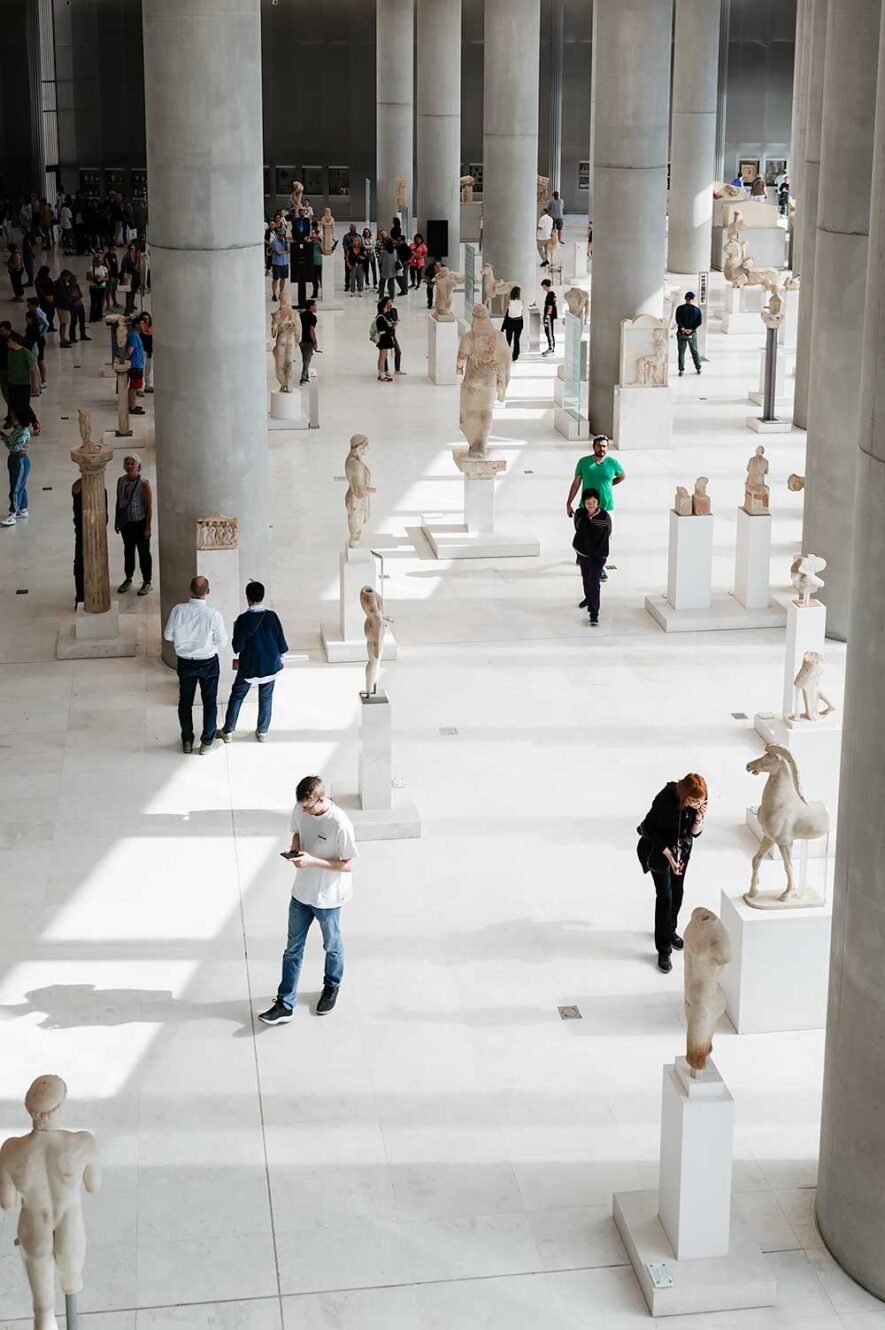
If you’re like me and not an expert in Ancient Greek history, you might feel you’re missing a lot of context when visiting the Acropolis. There are information signs by the temples, but they only scratch the surface. That’s where the Acropolis Museum comes in.
Located just opposite the Acropolis, this modern museum houses countless sculptures that once adorned the temples. You’ll also find a stunning replica of the Parthenon, giving you a sense of how it once looked.
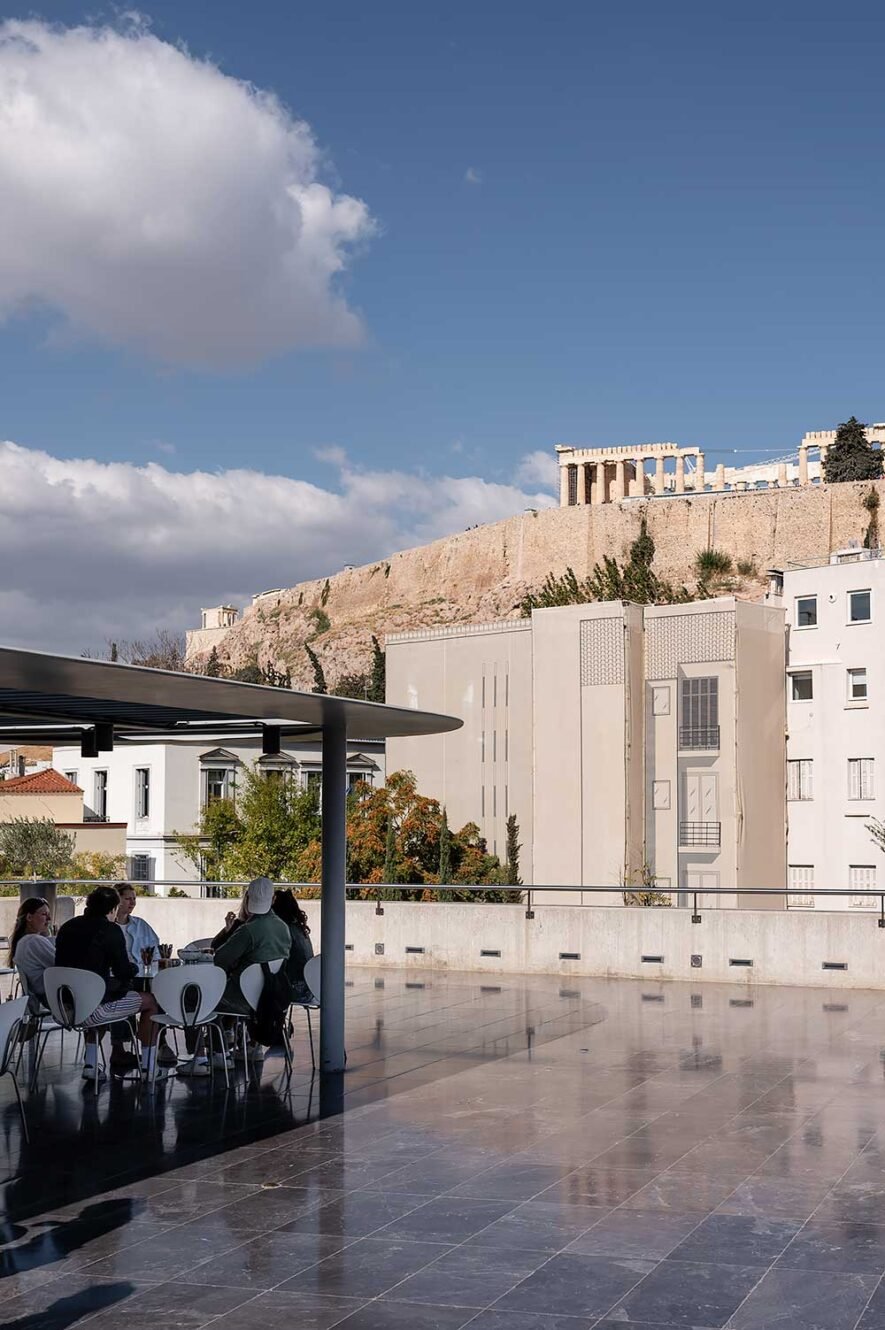
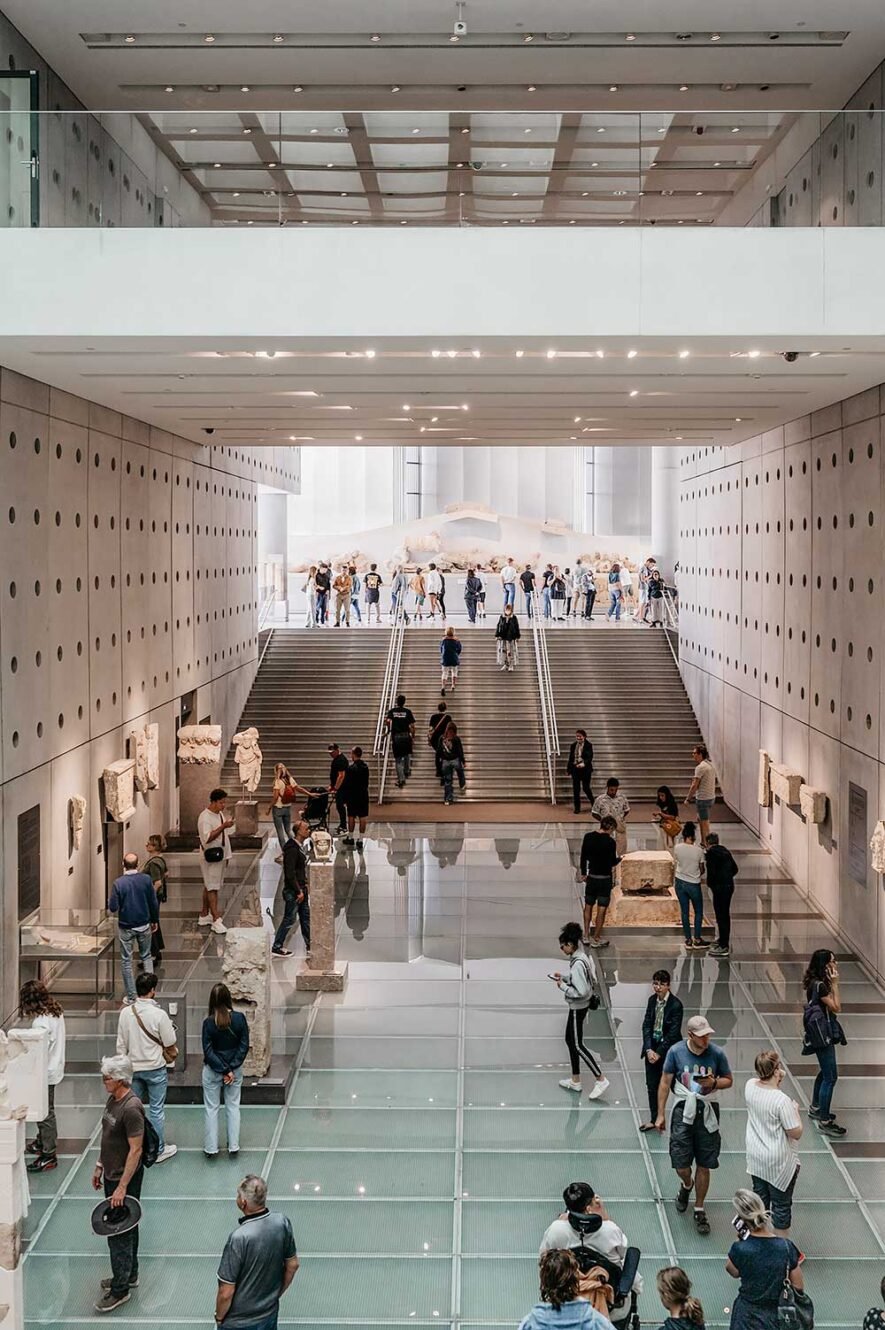
My advice would be to visit the museum before heading to the Acropolis to get the full picture. And don’t miss the café on the second floor, which offers gorgeous views of the Acropolis. The café is open to non-museum visitors too. I visited mid-day when there was a long line of people waiting to get in, so I quickly bought a skip the line ticket which saved me a lot of time.
Tip: Get a Combined Ticket for the most interesting places to visit in Athens
Since visiting the Acropolis requires booking a ticket in advance, it’s worth purchasing a Combined Ticket if you’re also planning to explore other historical sites. The ticket is valid for five days, starting from your first entry, and covers the most important archaeological places to visit in Athens (Acropolis, Ancient agora, Roman agora, Hadrian’s Library, Olympieion, Kerameikos and Aristotle’s school). You receive an e-ticket with a QR code that you scan to visit the sites.
4. Ancient Agora and Temple of Hephaestus
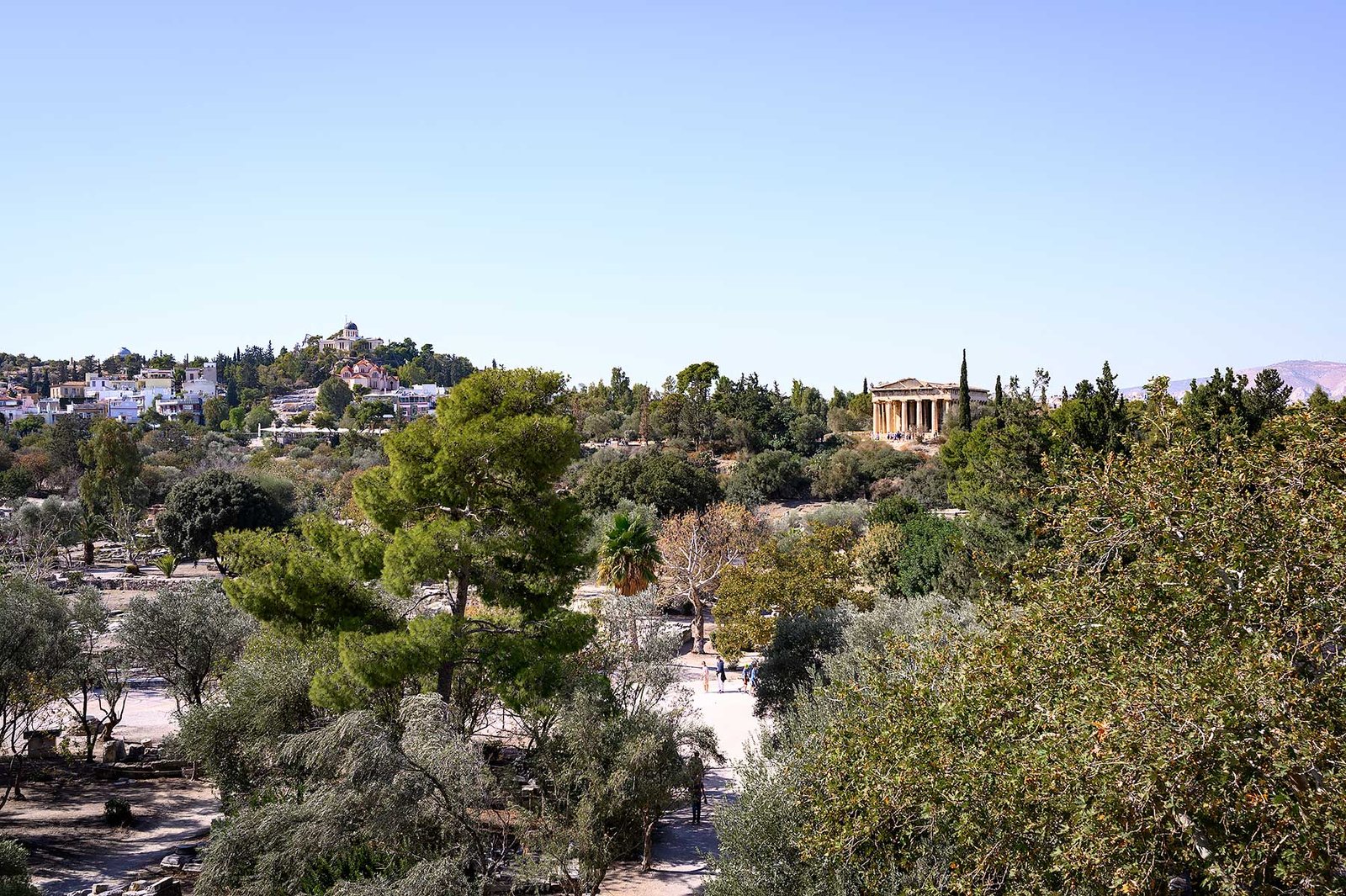
The Ancient Agora is one of the sites you can access with your combo ticket. After the Acropolis, I found this to be the most impressive historical place to visit in Athens. The Ancient Agora was the vibrant social, political, and commercial heart of Athens, where people gathered to trade, engage in political debates, and participate in religious ceremonies.
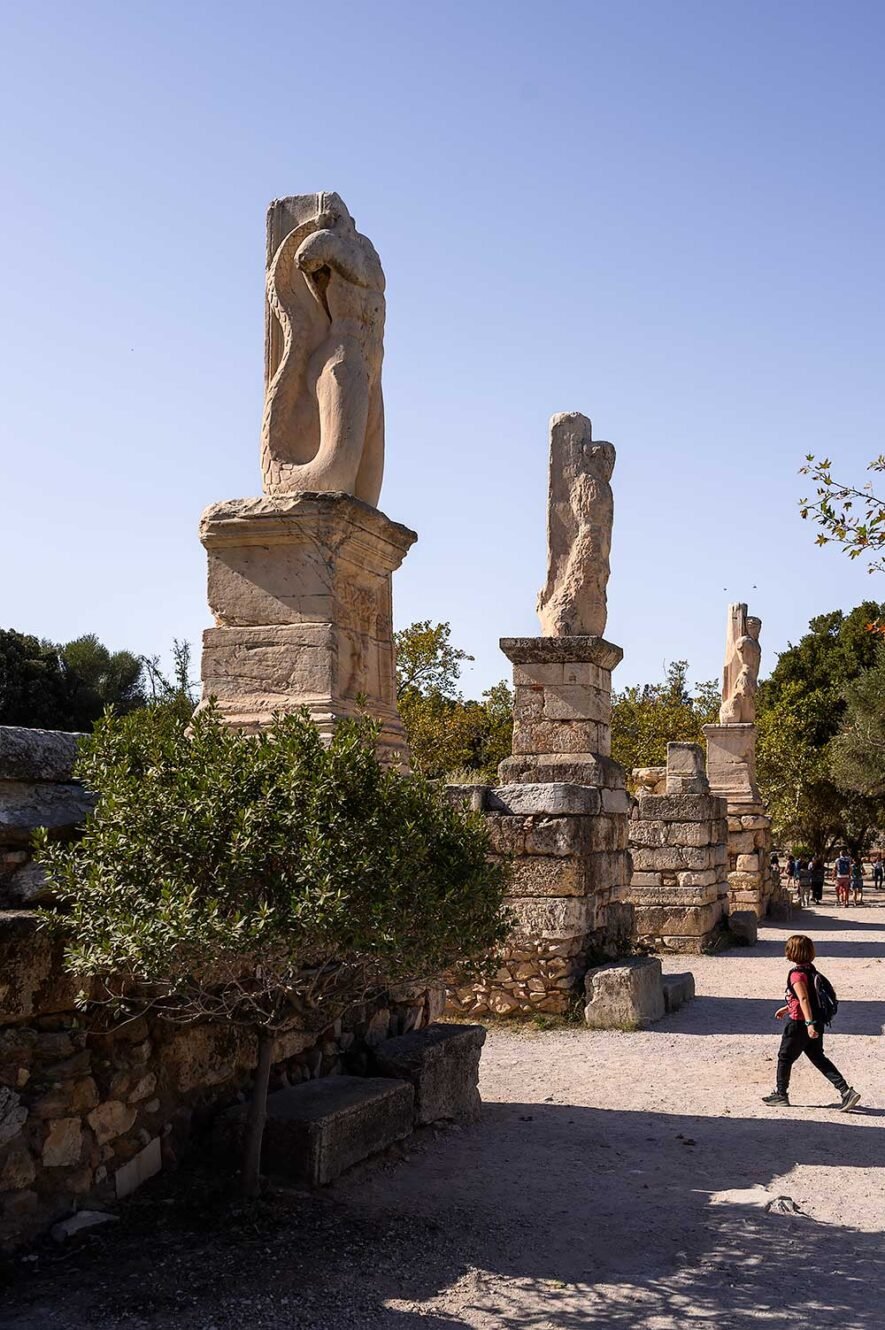
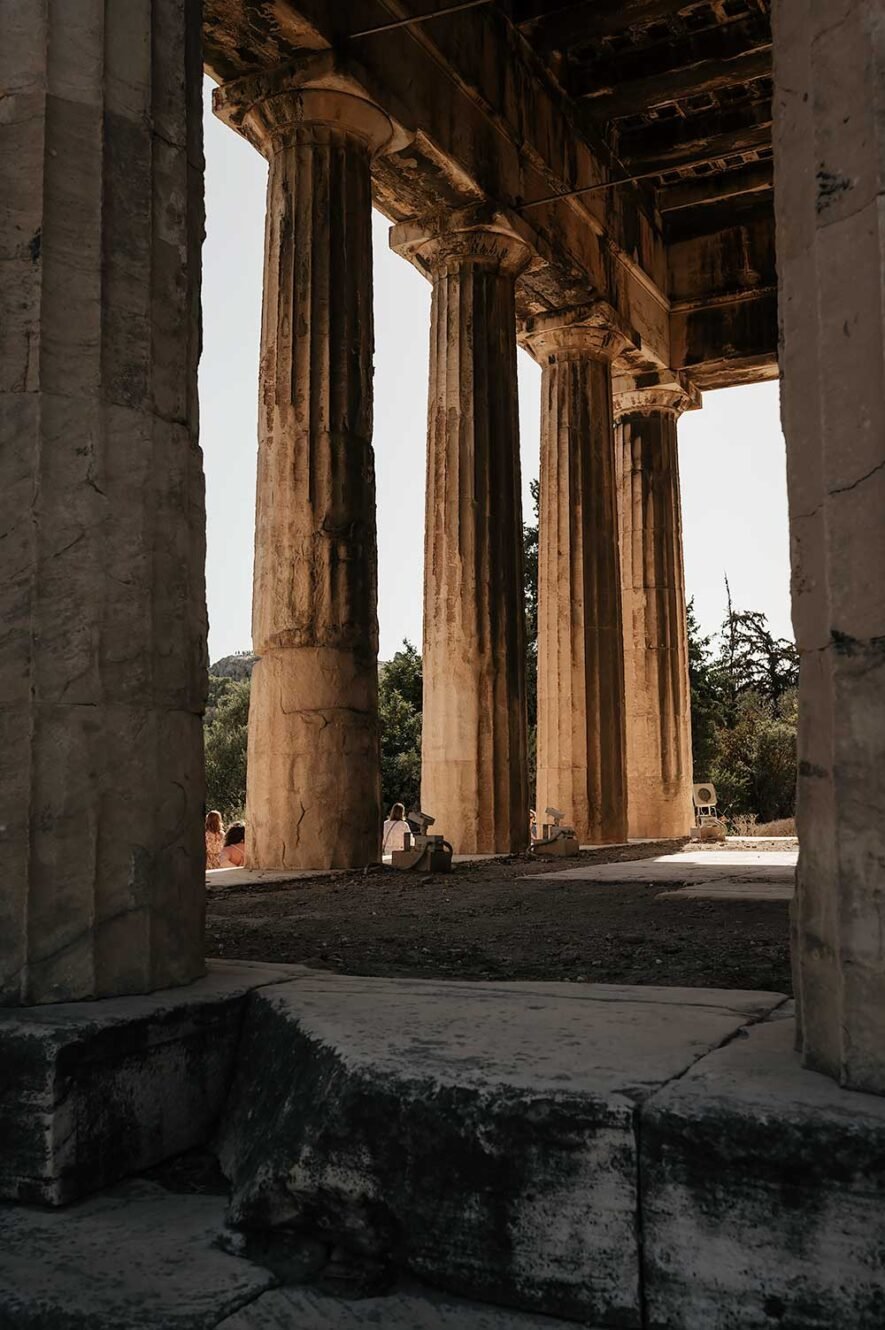
There is much to admire here, but to me the highlight is the Temple of Hephaestus from the 5th century BC. This is one of the best-preserved Doric temples in Greece.
5. Roman Agora
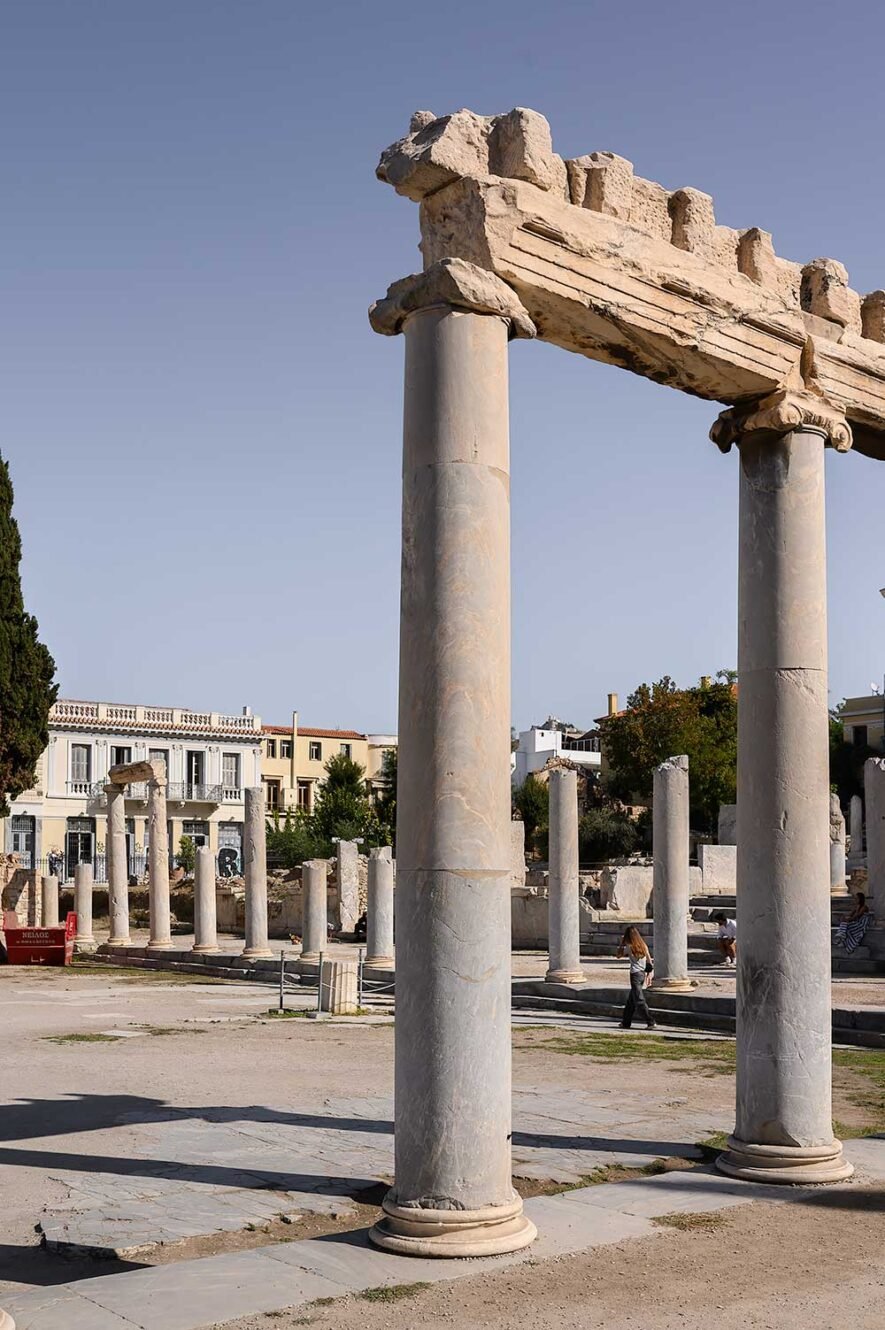
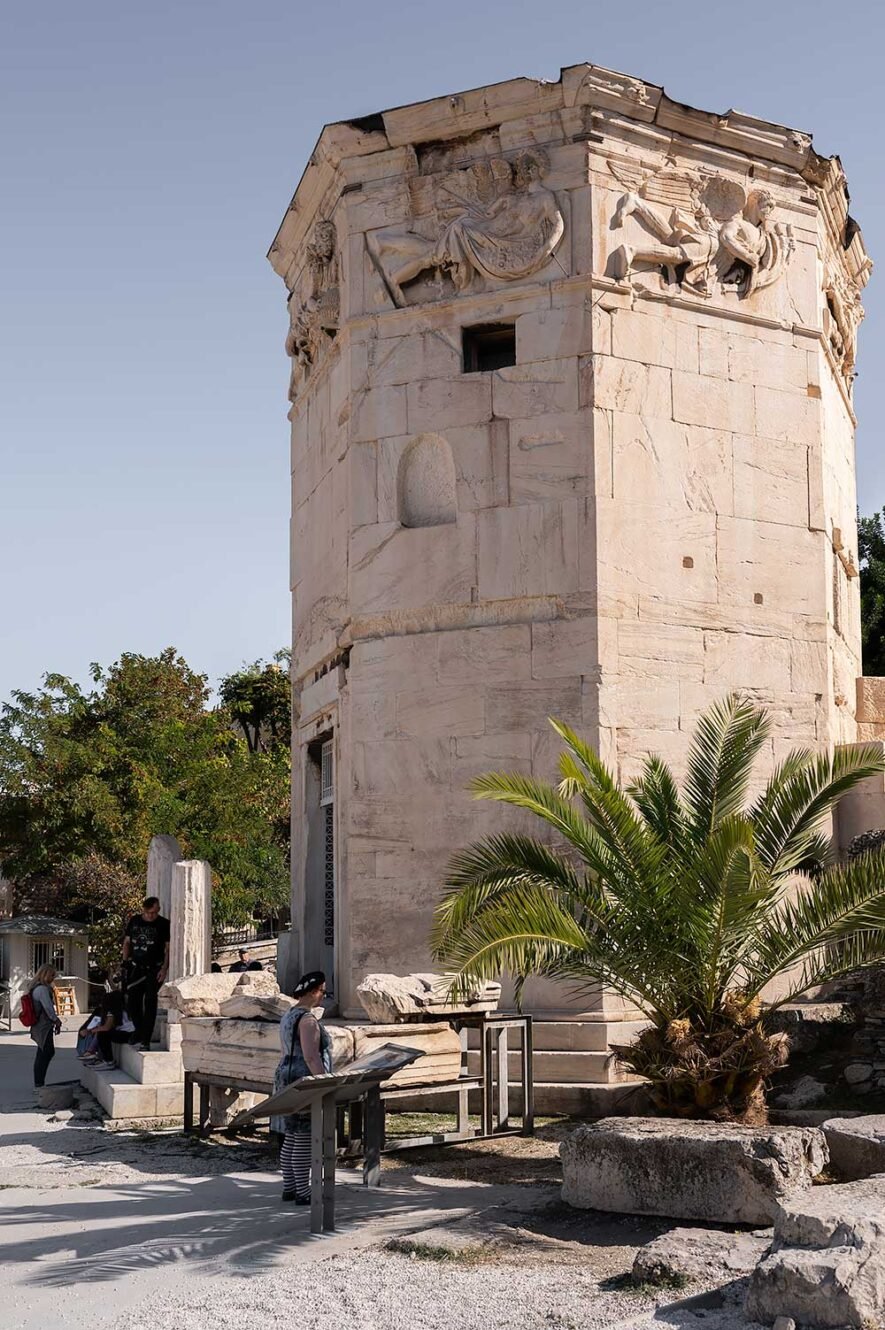
The Roman Agora replaced the Ancient Agora as the commercial center of Athens in the 1st century BC. Its construction was funded by Julius Caesar and Emperor Augustus. The Roman Agora is much smaller than the Ancient Agora and therefore less impressive. Much of it can also be viewed by walking around it behind a fence. If you have a combined ticket, it’s definitely worth taking a stroll through the site. Here, you can admire the Tower of the Winds up close, an octagonal marble structure that served as a sundial, water clock, and weather vane.
6. Hadrian’s Library
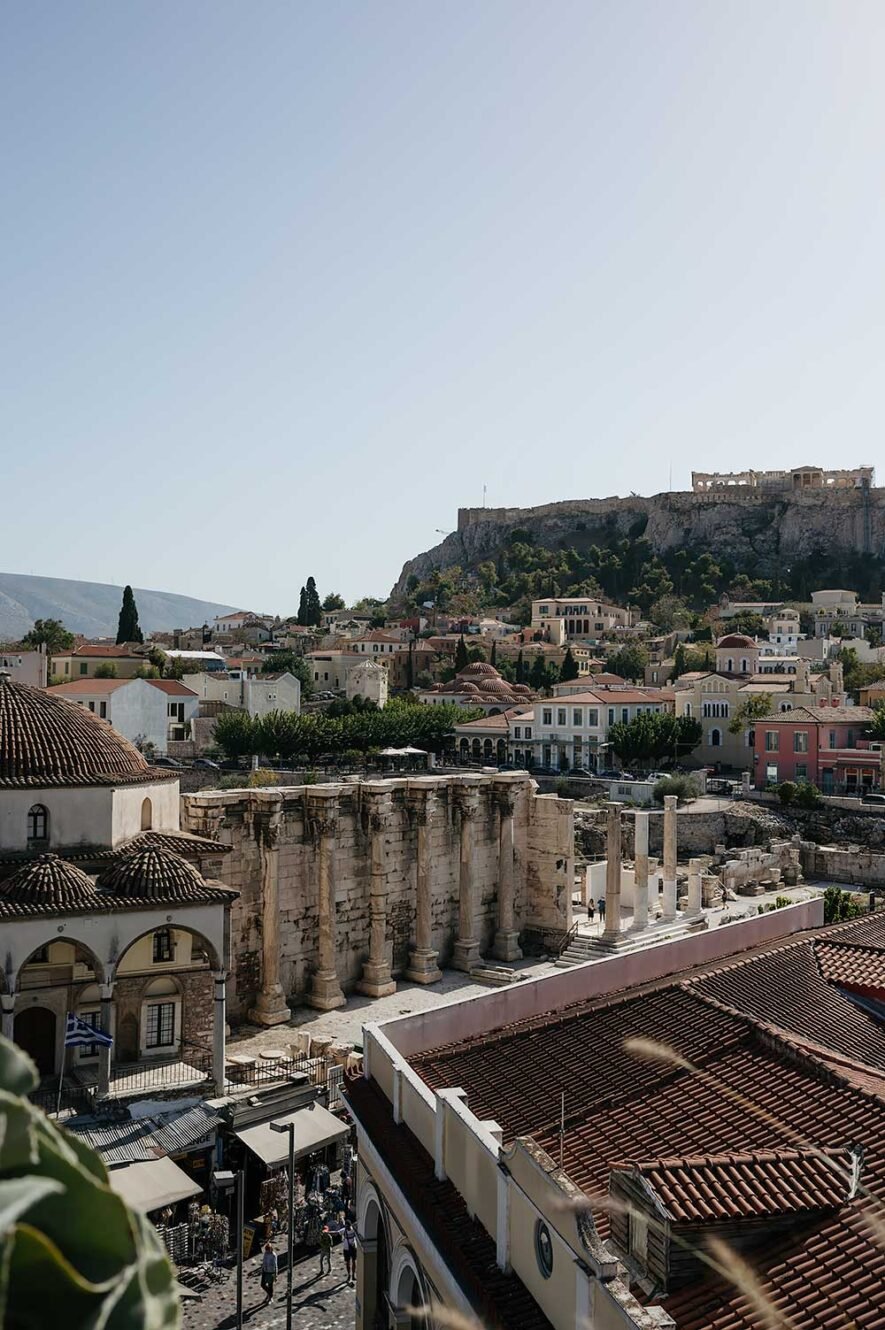
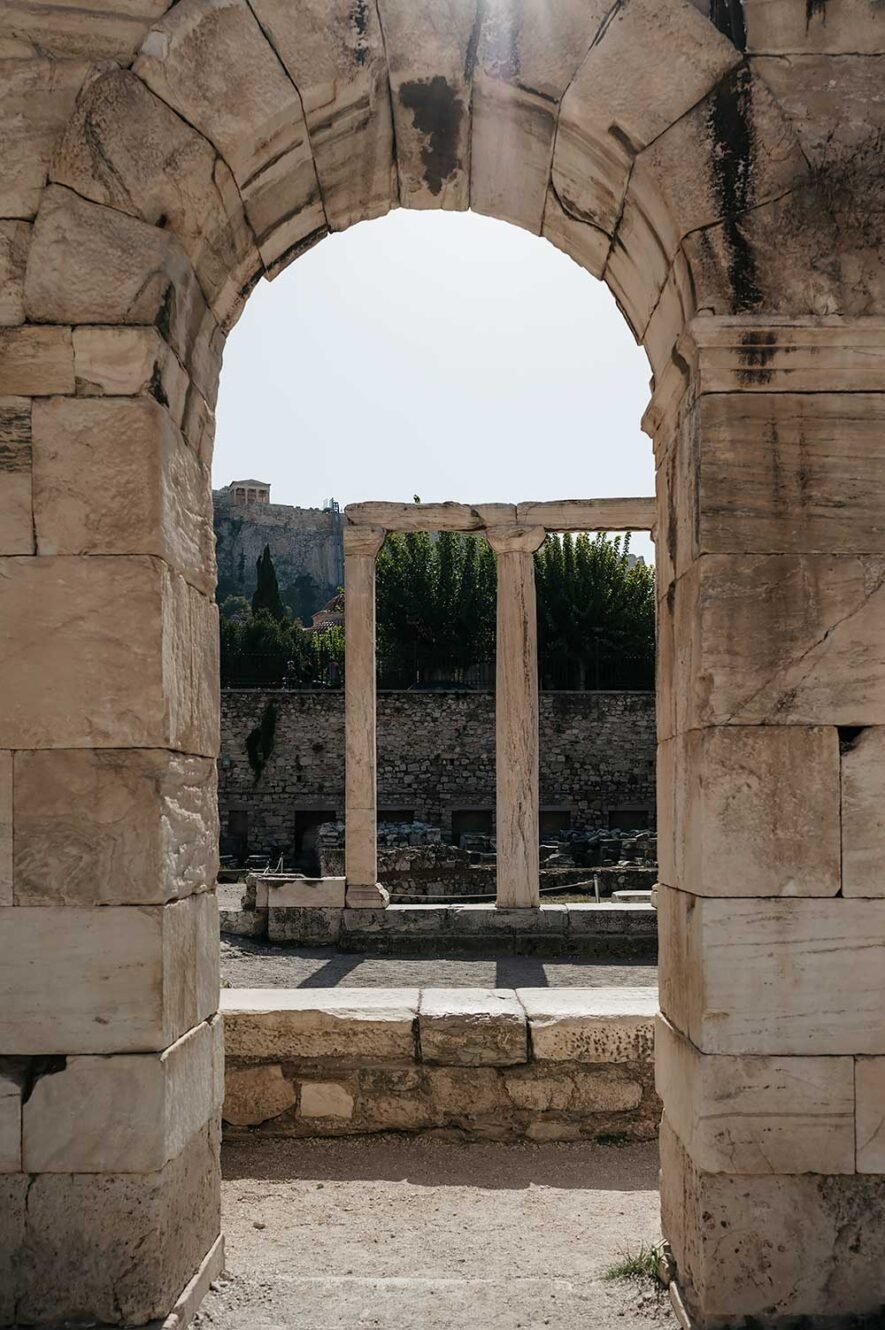
Hadrian’s Library was once a grand cultural center in ancient Athens, hosting educational and philosophical activities. Built in 132 AD by the Roman Emperor Hadrian, it housed an extensive collection of books, study rooms, and lecture halls. While much of the structure is now in ruins, many columns and architectural elements remain, giving you a glimpse of its former grandeur.
7. Kerameikos
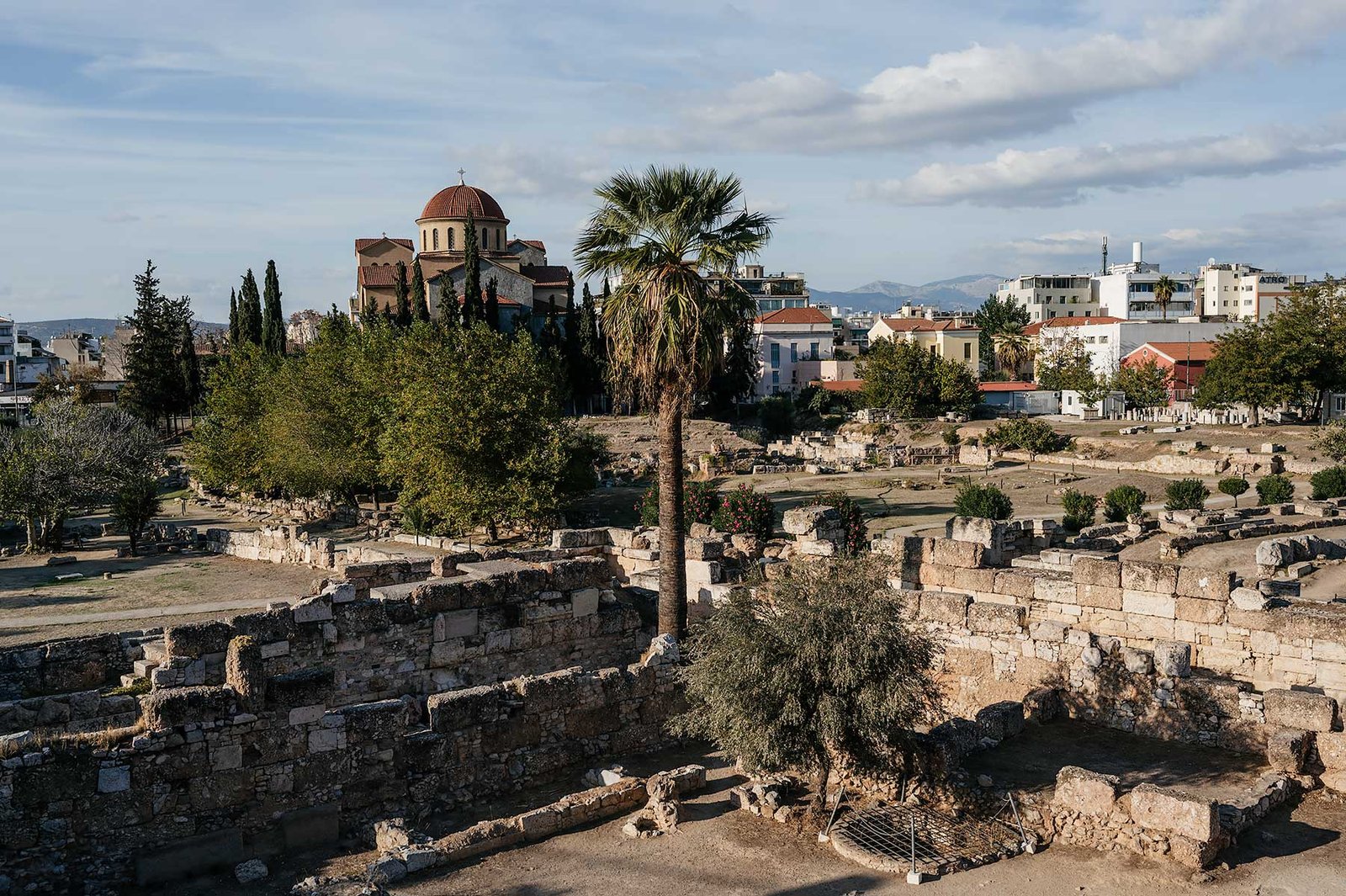
Another fascinating historic place you can visit with your Combo Ticket is Kerameikos. Once Athens’ main cemetery and a center for pottery production (the Greek word keramos means clay), Kerameikos dates back to the 12th century BC. Here, you’ll find remains of graves, monuments, and parts of the ancient city walls. Unfortunately, the opening hours had recently changed and it had just closed when I tried to visit, so I could only admire it from outside the gates—but it was still impressive. This will definitely be one of the places I’ll visit again next time I’m in Athens.
8. Olympieion (Temple of Zeus)
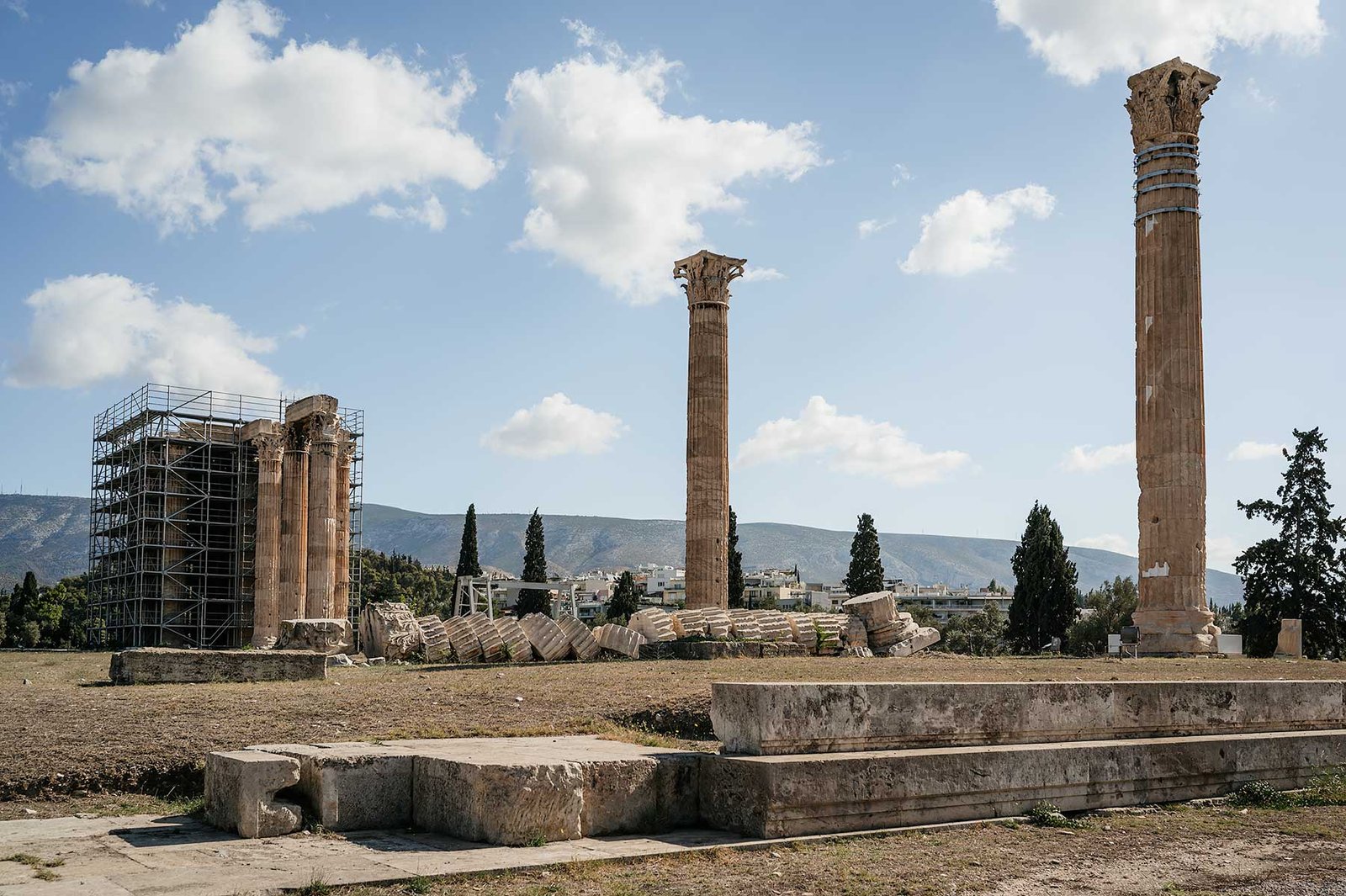
Another significant archaeological site in Athens is the Olympieion, also known as the Temple of Zeus. Construction began in the 6th century BC but wasn’t completed until the 2nd century AD. This was once the largest temple in Greece, dedicated to Zeus, the king of the gods, and had a colossal statue of him. Sadly, only 15 of its original 104 Corinthian columns remain standing, but they still give a sense of its immense scale. Access to the Olympieion is included with your Combined Ticket.
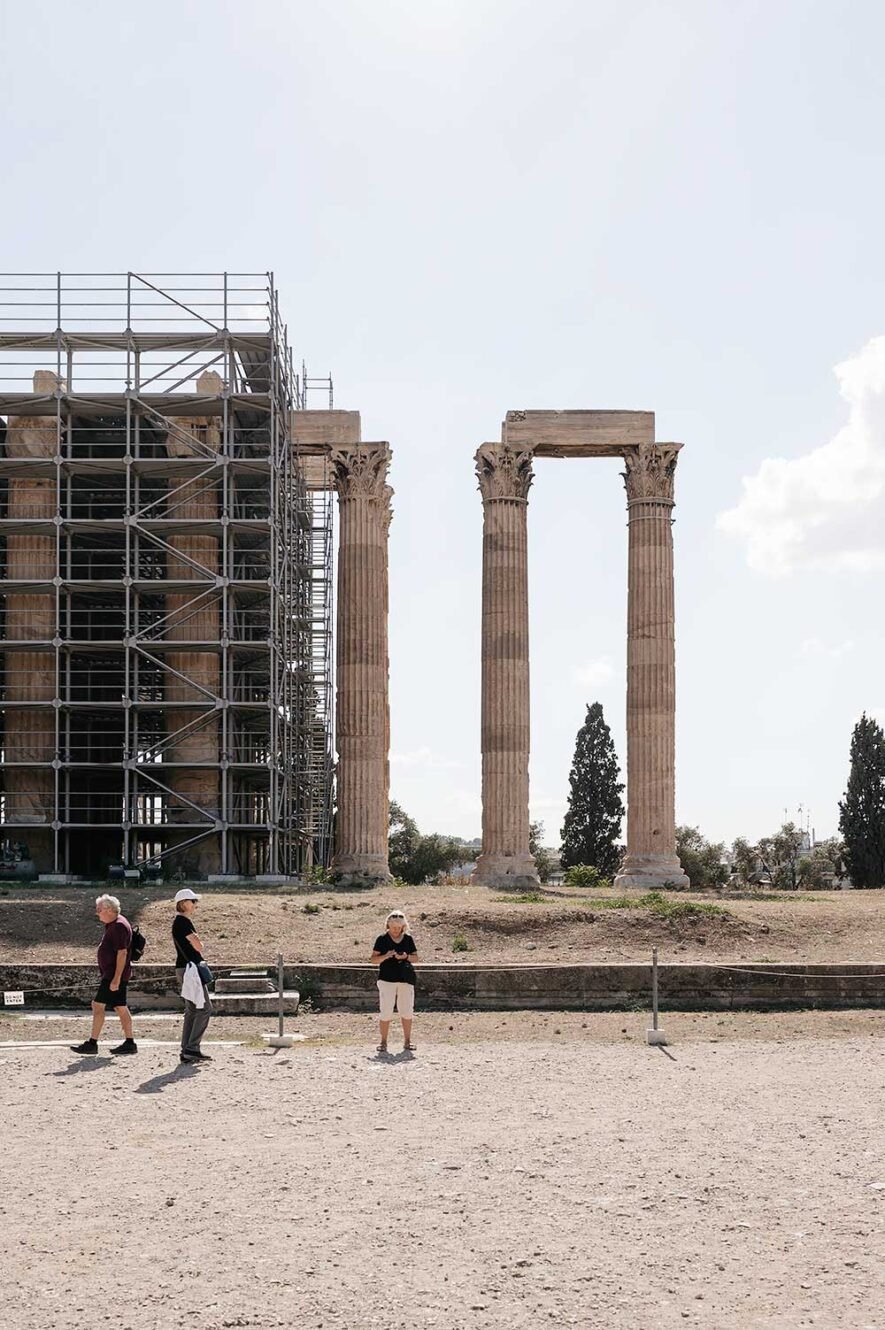
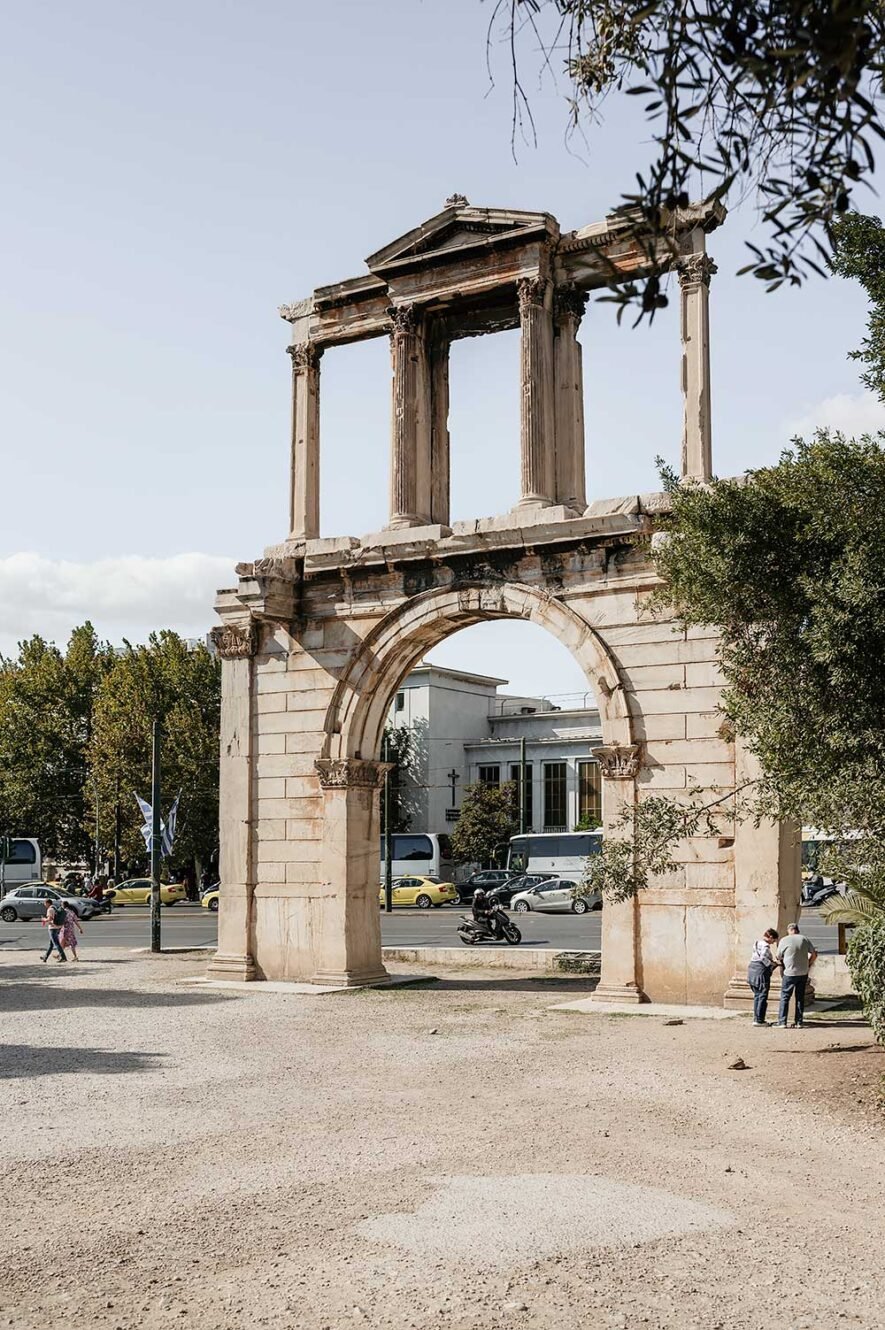
Just outside the Olympieion site stands the Arch of Hadrian (Hadrian’s Gate) for which you don’t need a ticket.
9. Changing of the guard at the tomb of the unknown soldier

The changing of the guard in front of the Greek Parliament building on Syntagma Square is a spectacular ceremony and one of the best things to do in Athens. The guards, an elite unit of the Greek army called the Evzones, honor all unknown Greek soldiers who gave their lives for their country (the Tomb of the unknown soldier) with their distinctive tsarouchia shoes with pom-poms and their slow, deliberate movements.
The changing of the guard takes place every hour, on the hour. The most elaborate version occurs on Sunday mornings at 11:00, when the full honor guard parades accompanied by a military band.
10. National garden of Athens
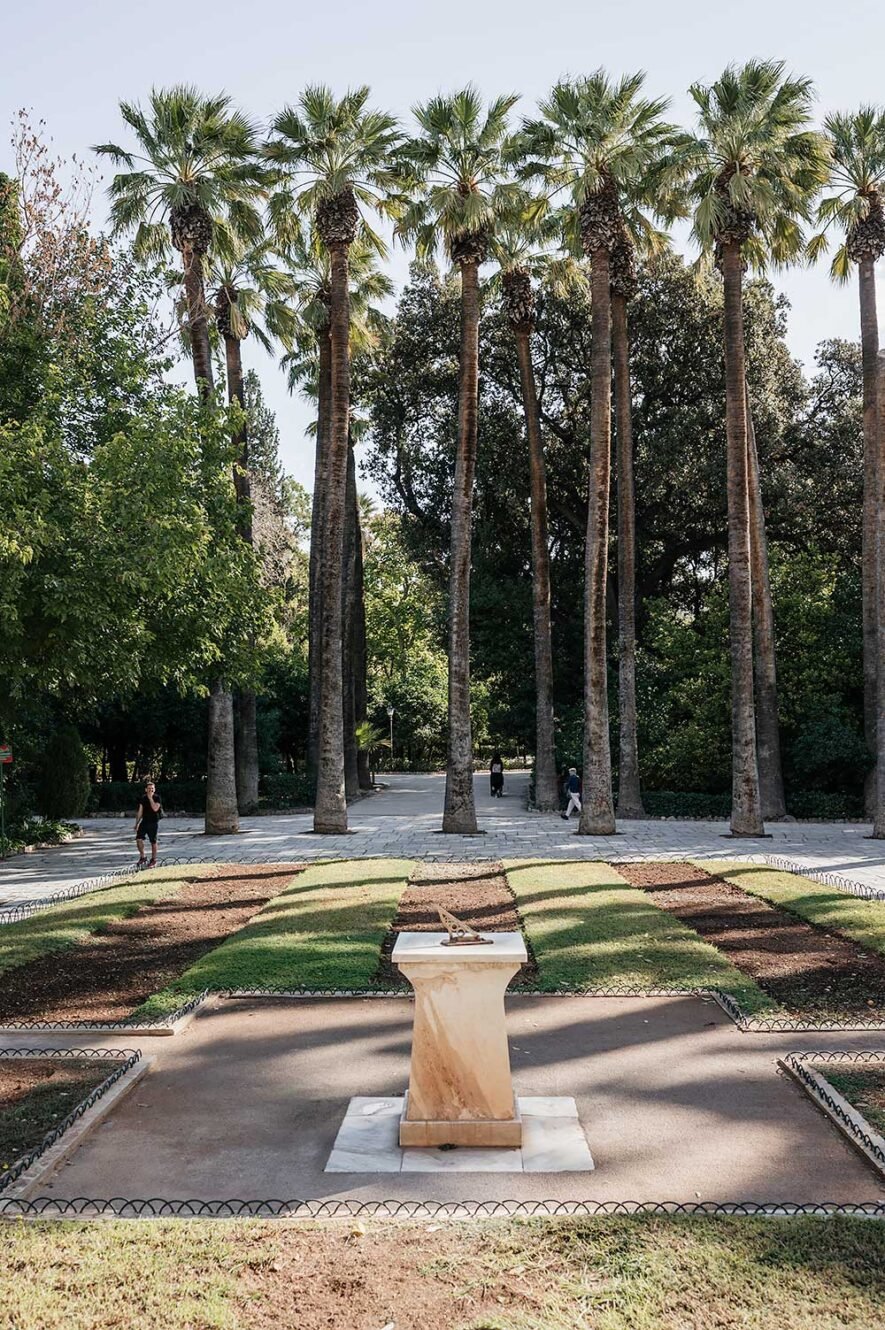

Just steps away from Syntagma Square, you’ll find the National Garden of Athens—a beautiful park covering around 15.5 hectares where you can escape the city’s hustle and bustle. The park was established in 1838 as a private garden for Queen Amalia, Greece’s first queen, who envisioned a garden filled with exotic plants and trees from all over the world. Since the 20th century, it’s been open to the public. If you’re looking for a beautiful, quiet place to visit in Athens, spend some time here.
11. Panathenaic Stadium
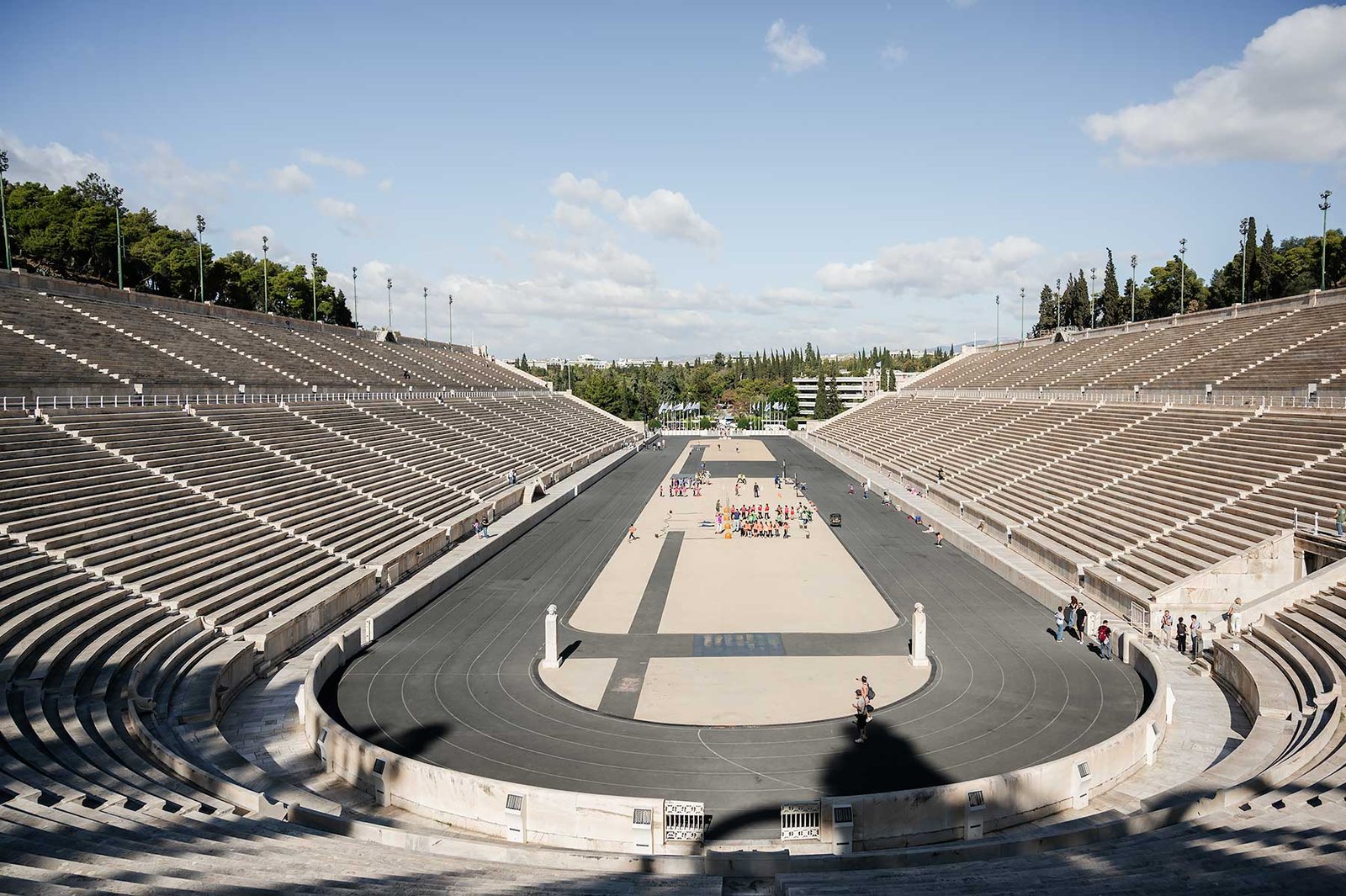
On the other side of the National Garden, you’ll find the Panathenaic Stadium. This impressive marble Olympic stadium has a history dating back to the 4th century BC. Originally built for the Panathenaic Games—a grand religious and athletic festival dedicated to the goddess Athena—it was entirely rebuilt in 1895 for the first modern Olympic Games of 1896. Today, it’s the finishing point of Athens’ annual marathon.
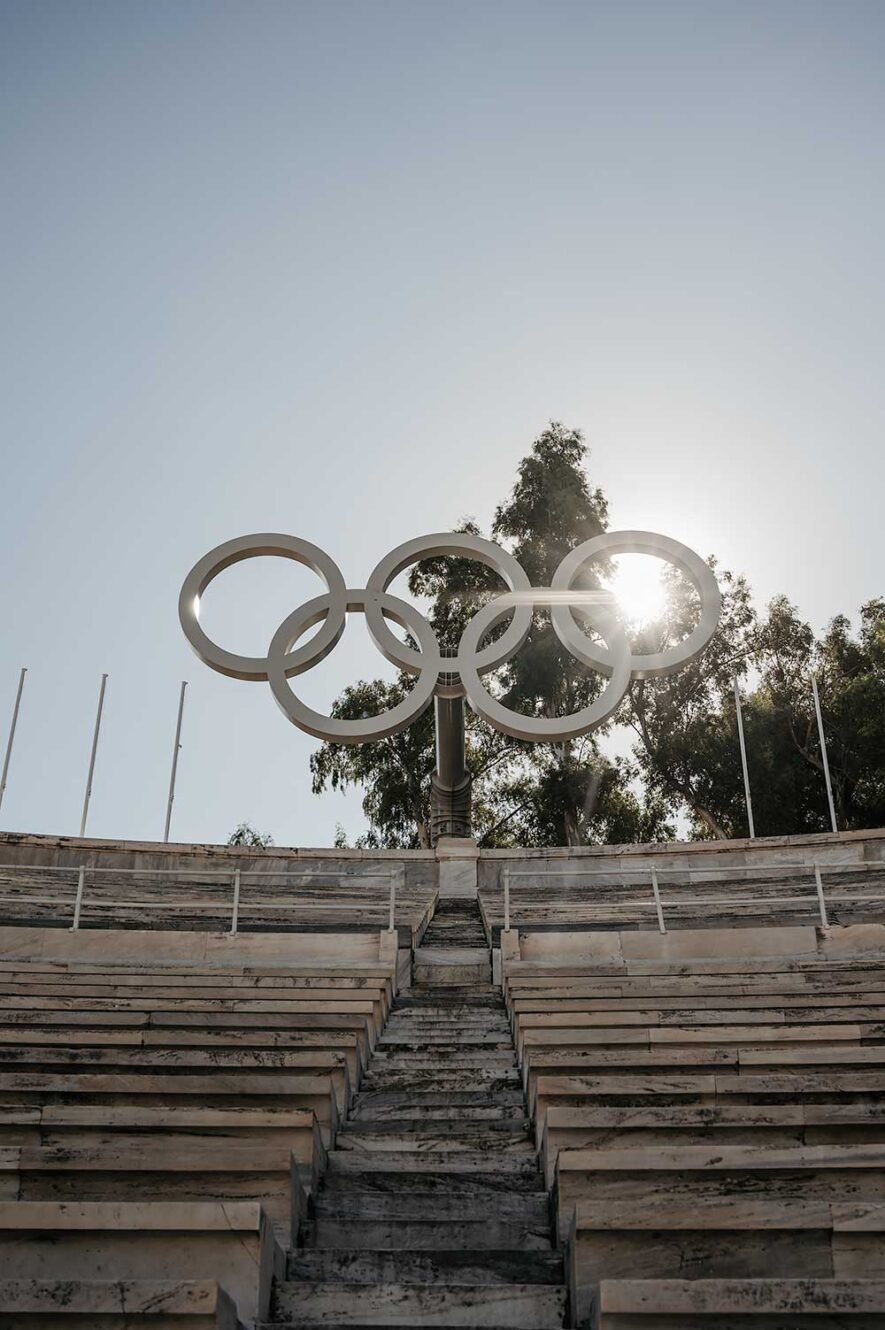

You can admire the stadium from the front without needing a ticket, but I found it well worth it to walk around the historic site and listen to the audio tour, which highlights fascinating details. Even if you’re not into sports, this is an interesting place to visit in Athens.
12. Varvakeios Market
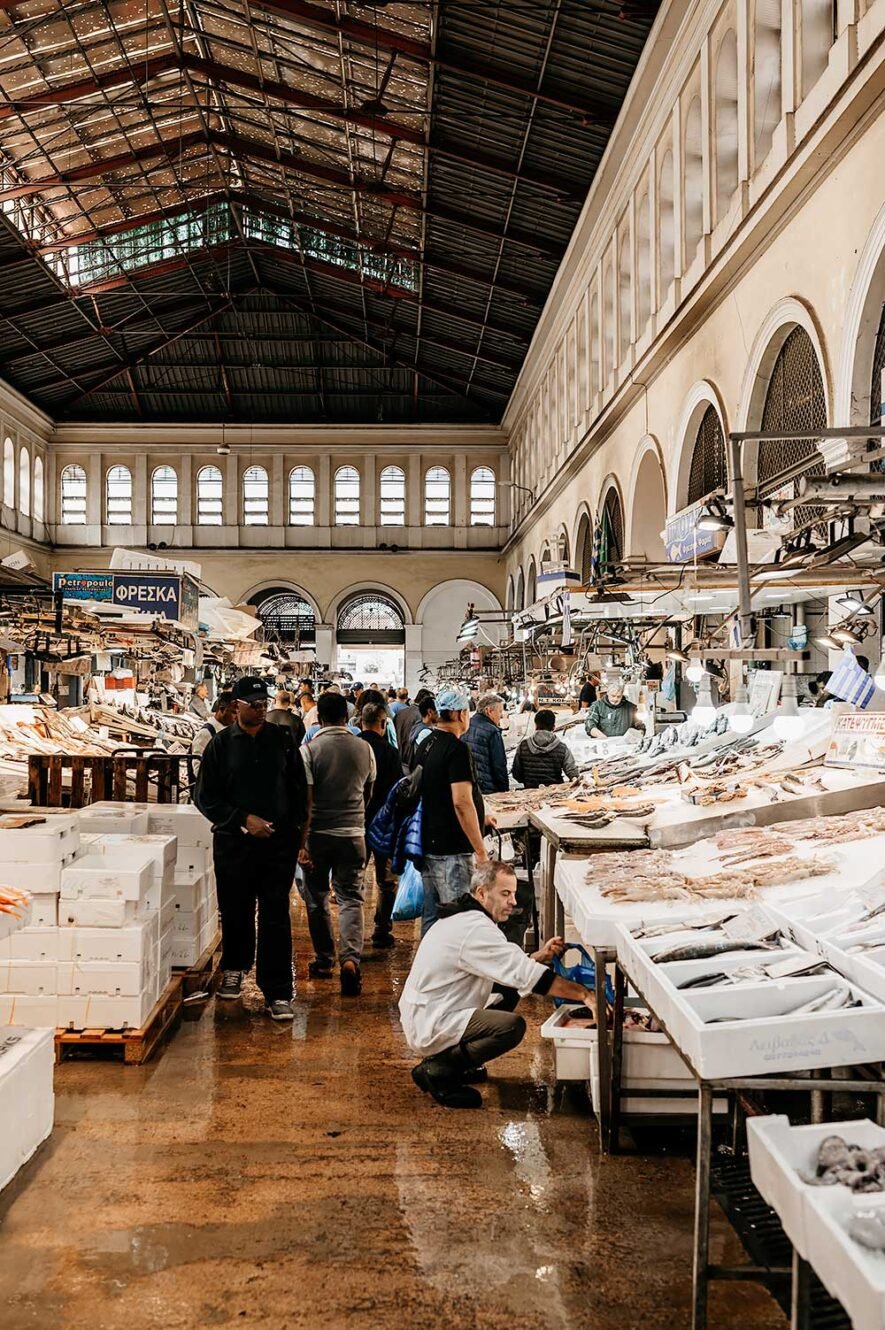

If you want to see where locals shop for meat, fish, and vegetables, the Varvakeios Market is a must-visit. Built in 1884 and named after Greek philanthropist Ioannis Varvakis, this vibrant food market has it all. In the central area, fishmongers loudly compete for attention (closed-toe shoes are a good idea since the floors are wet), while butchers chop large cuts of meat in the surrounding hall. Outside, you’ll find stalls offering fresh vegetables, herbs, olives, and traditional Greek delicacies. I found it one of the most fun things to do in Athens.
13. Plaka
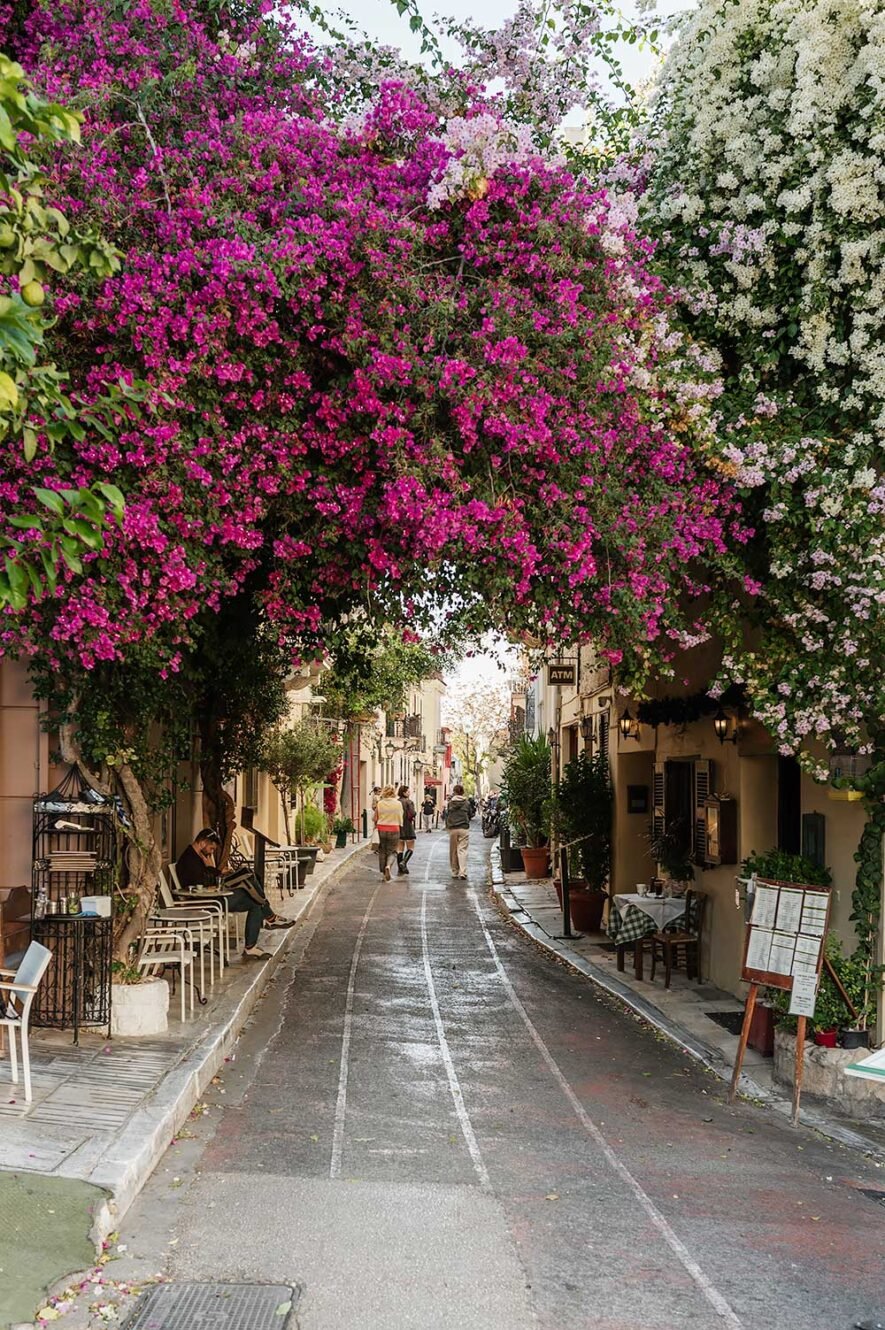
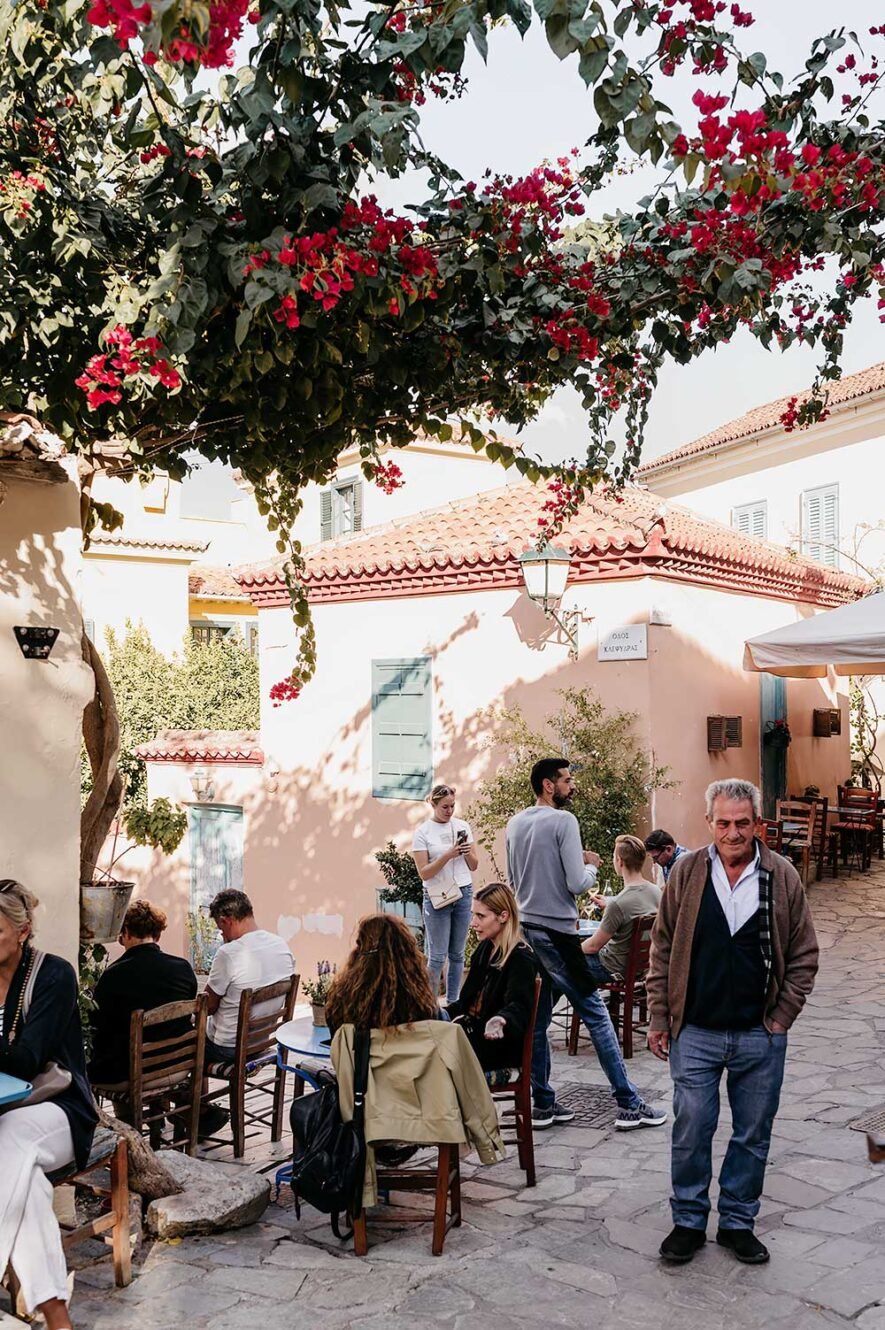
If you’ve seen photos of charming, narrow streets with flowers in Athens, they were likely taken in Plaka. This is one of the city’s oldest and most picturesque neighborhoods, immensely popular with tourists. It’s packed with taverns, cafes, and souvenir shops and is conveniently located at the foot of the Acropolis, making it easy to combine with other attractions.
Tip: the Lonely Planet Athens guide and Time to Momo Athens guide (if you understand Dutch) both have a nice walking tour of Plaka, taking you along the most scenic and interesting places.
14. Anafiotika

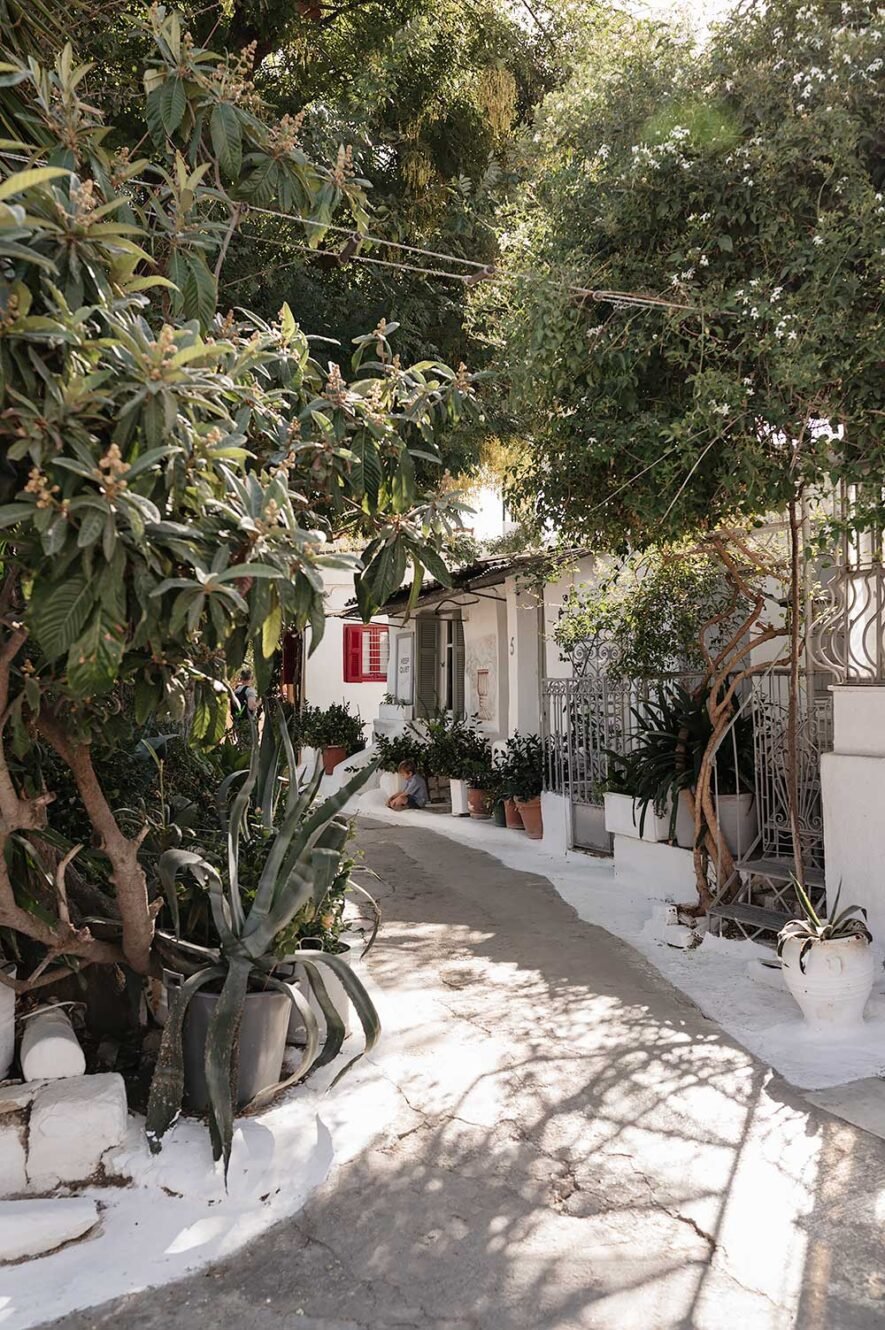
While Plaka is lovely, you definitely don’t want to miss the charming Anafiotika neighborhood. Located on the northern slopes of the Acropolis, I walked here right after my visit. Anafiotika was built in the 19th century by construction workers from the island of Anafi, who had been hired to build the Royal Palace. They created their own neighborhood in the style of their home island, featuring narrow alleys, whitewashed houses, brightly painted doors, and bougainvillea everywhere. Tourists have since discovered this spot, so it’s no longer a “hidden” gem, but it’s still quieter than the rest of Plaka and perfect for a stroll.
15. Naxos Apothecary

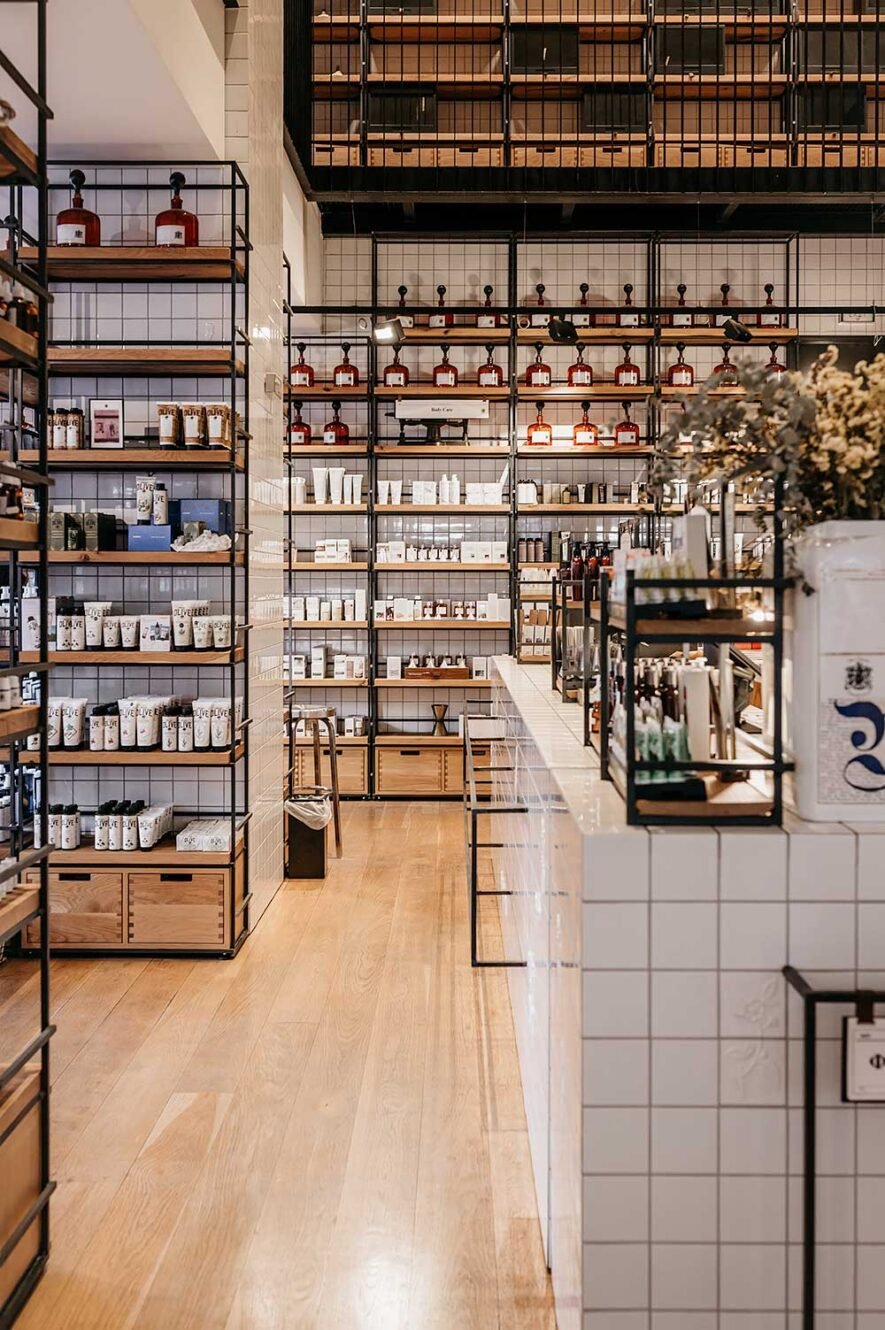
Not all things to do in Athens are centuries old. I’m not usually into shopping when I travel, but this store was impossible to resist. Naxos Apothecary is a super stylish store featuring Korres, a globally renowned Greek brand specializing in natural skincare and cosmetics. I picked up a few great products to bring home.
16. Ergon House
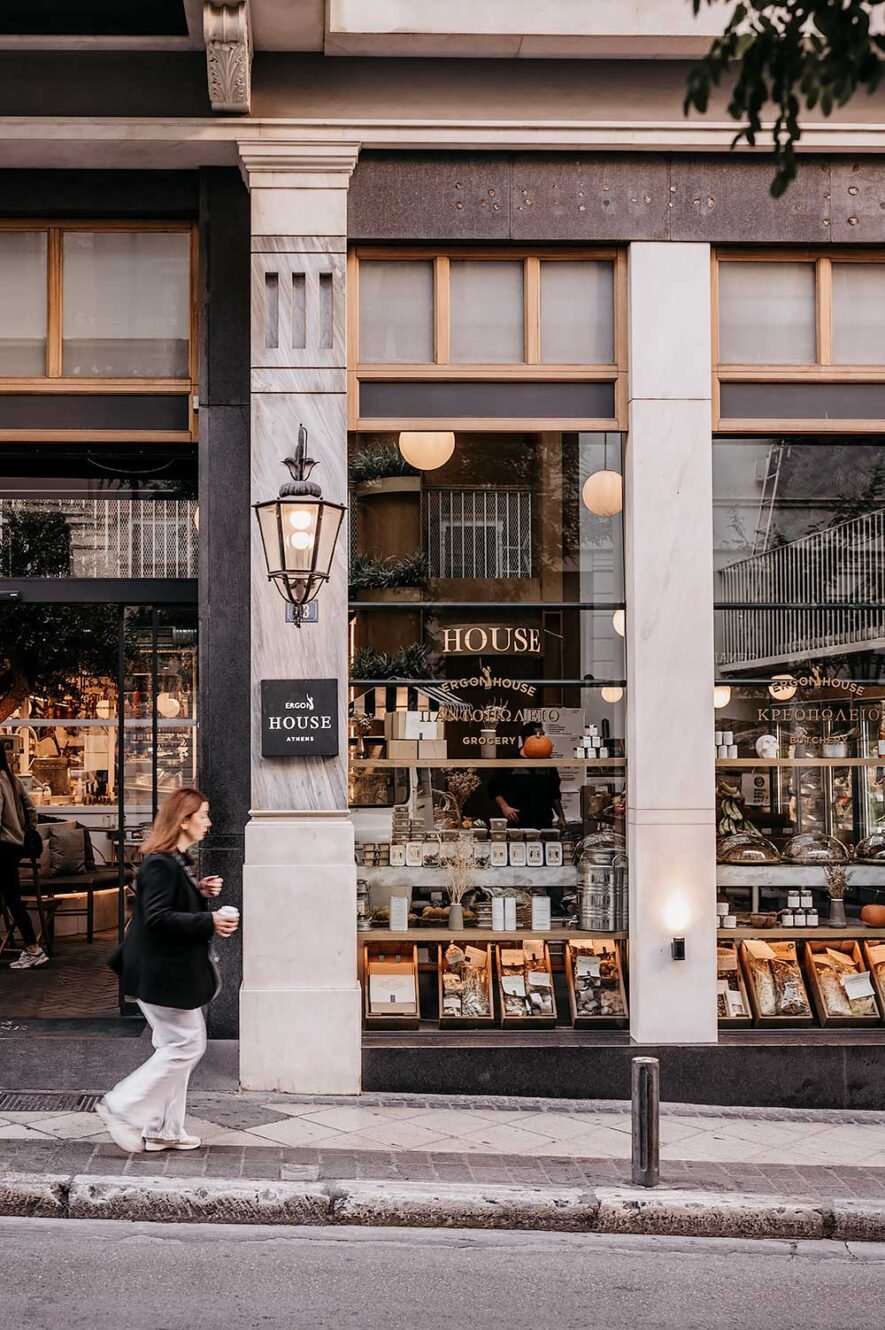

Another modern place to visit in Athens —especially for foodies—is Ergon House. While this tip also belongs in a post about the best food in Athens, it’s more than a cafe and restaurant. It’s also a market and deli where you can buy top-quality Greek products like fresh fish, meat, and vegetables. It’s the perfect spot for edible souvenirs!
You can also stay here. I spent a night at the Ergon House hotel, which offers views of the Acropolis. More on that below.
17. Little Kook
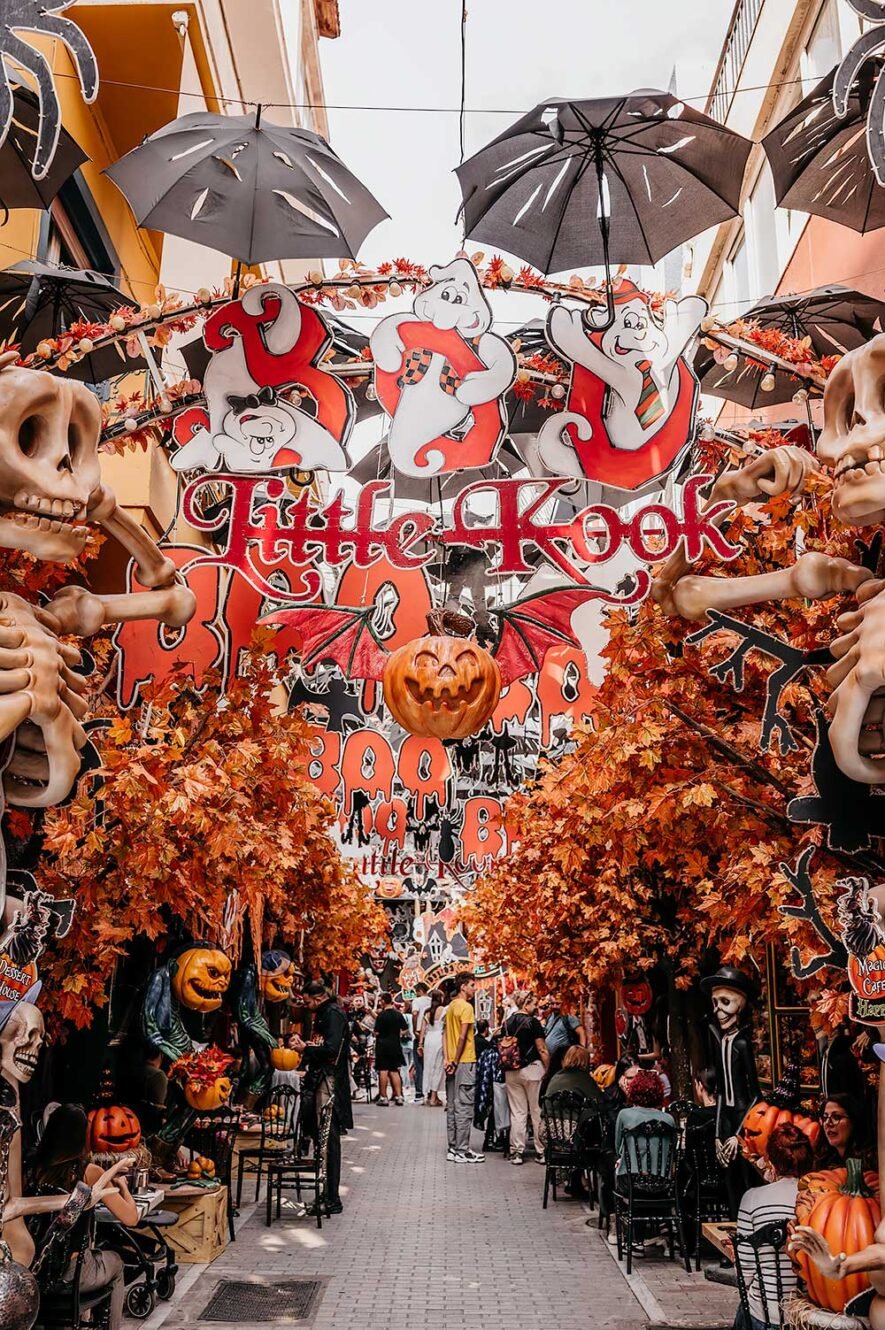

To be honest, places like this aren’t really my thing, but it’s definitely a unique thing to do in Athens. If you’re traveling with kids, they’ll likely find it spectacular. Little Kook is an eccentric cafe with fairytale-themed decorations that change with the seasons. I visited in late October, so everything was Halloween-themed.
How many days do you need to visit Athens?
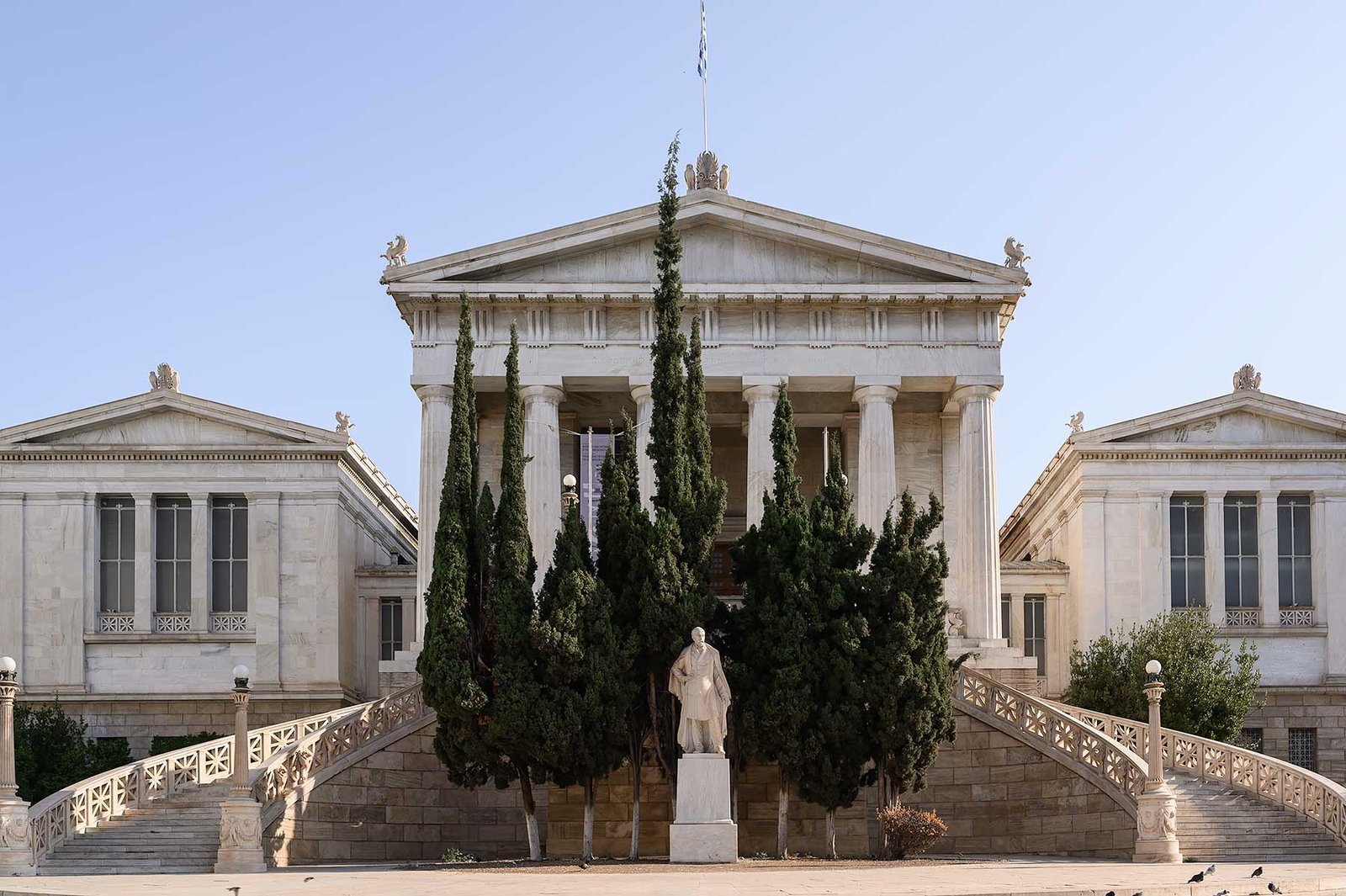
Before visiting Athens, I had read that you don’t need much time to explore the city. Two or three days would suffice. I stayed from Monday to Saturday, and while I wasn’t sightseeing all day, I could have easily spent much more time in Athens, having an amazing time.
The great thing about Athens is that the city center, with its main historical places to visit, is relatively compact. While the Acropolis and the Ancient Agora require more time, other archaeological sites can be seen more quickly. In a (long) weekend, you can cover many of the top things to do in Athens and still have time to enjoy great food and drinks on the city’s many rooftop terraces. If you prefer a slower pace or want to visit the beach or neighborhoods outside the center, I’d recommend staying longer.
Tips for getting around Athens
Athens is a large city, but the center is easily walkable, with the occasional short metro ride for when your feet need a break.
Metro Line 3 departs every 30 minutes and takes just over half an hour to get from Athens International Airport to the city center. At any metro station, you can buy public transport tickets for 24 hours, 2 days, or 5 days, which allow unlimited travel within the city center—but not to or from the airport. For those trips, you’ll need to buy a separate ticket.
Where to stay in Athens: The best boutique hotels
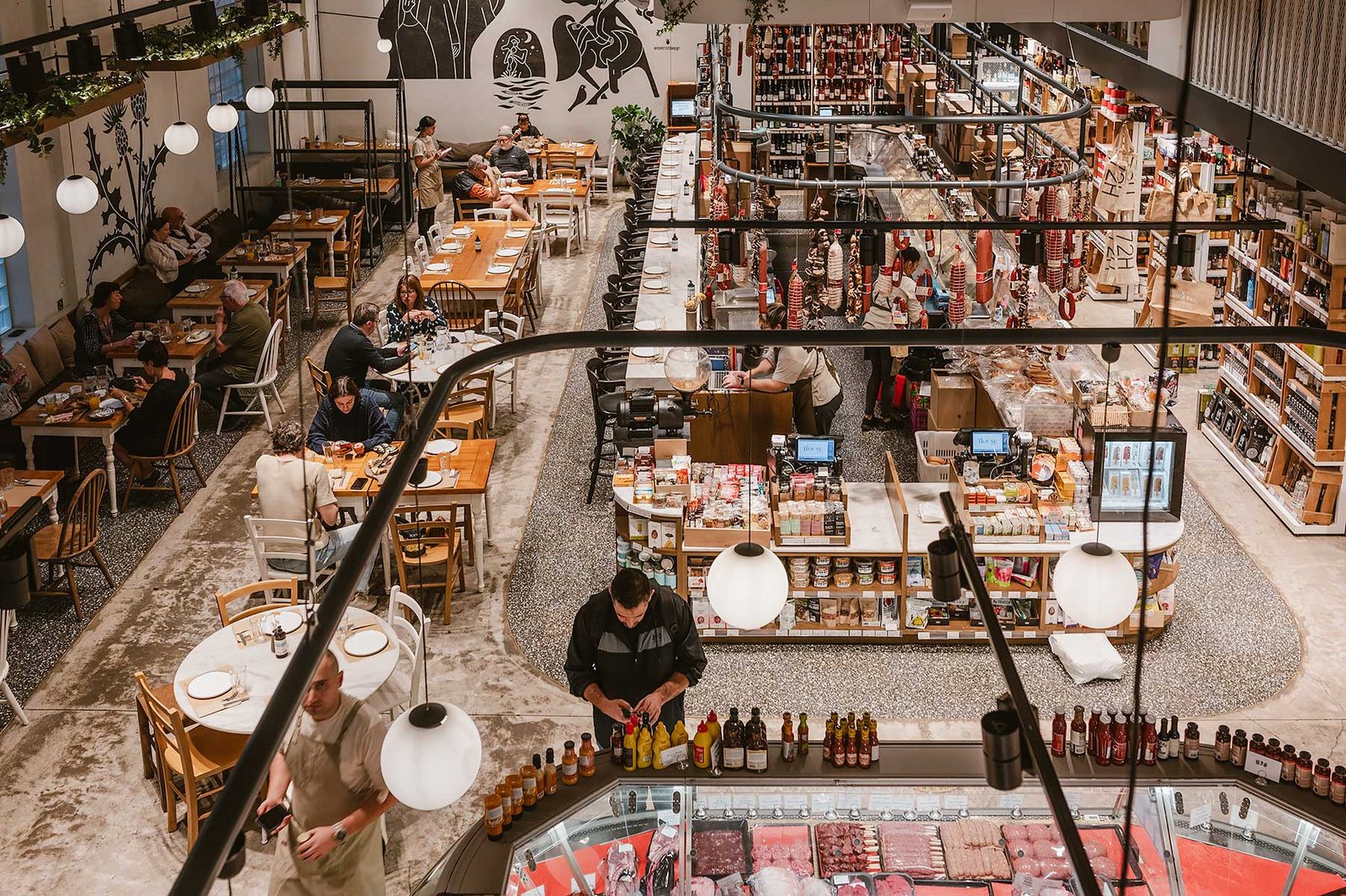
In most neighborhoods there are interesting things to do, great restaurants, and cozy coffee shops. So a hotel in one of the central districts is almost always a good choice. However, each area has its own distinct vibe, and you might feel more comfortable in one neighborhood than another.
I stayed in three stunning boutique hotels in three different neighborhoods: Psiri, with its slightly alternative vibe featuring trendy bars and cafes; Kolonaki, the chic district with upscale shops and restaurants; and Syntagma, the commercial heart of the city with wider streets and a more modern atmosphere.
Monument Hotel Athens (Psiri)
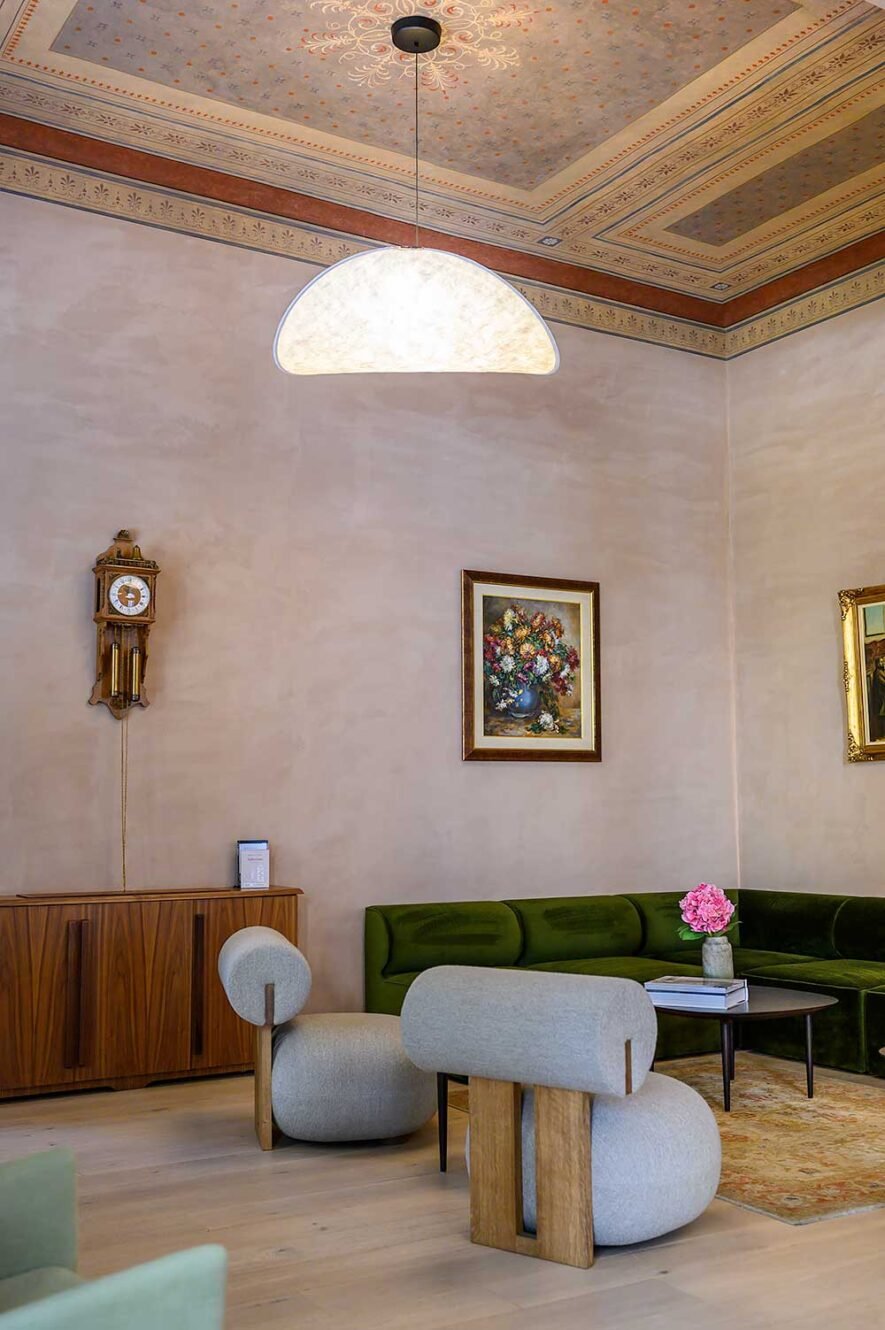
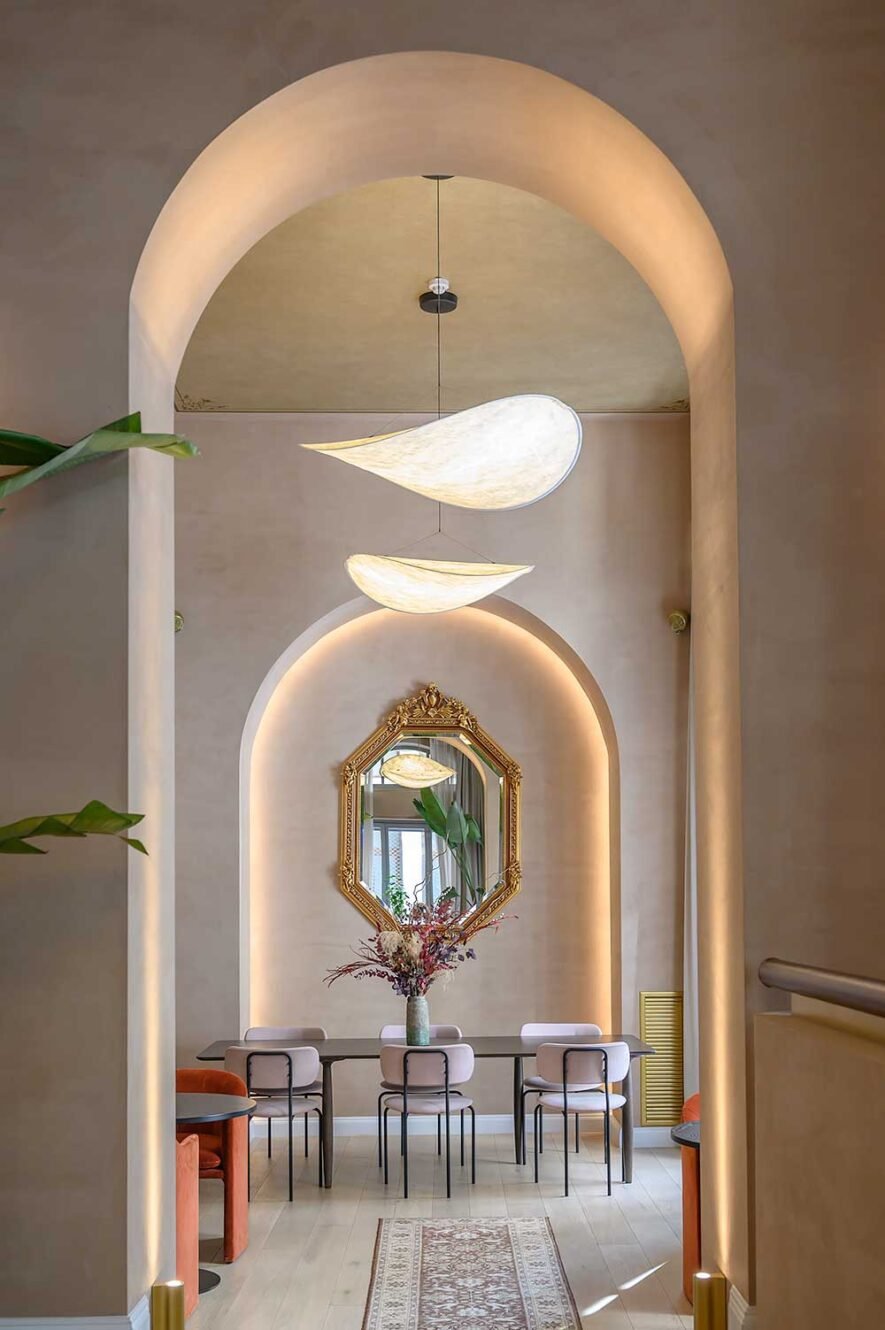
Psiri is not the most fancy part of Athens, with graffiti on the walls of old buildings. However, this is also where you’ll find one of Athens’ most beautiful new hotels: Monument. The moment you step inside, you enter a different world where you instantly feel welcome.
The building—a true monument—was constructed in the 19th century by the renowned German-Greek architect Ernst Ziller. Following a meticulous renovation, the Monument Hotel Athens opened in 2023.
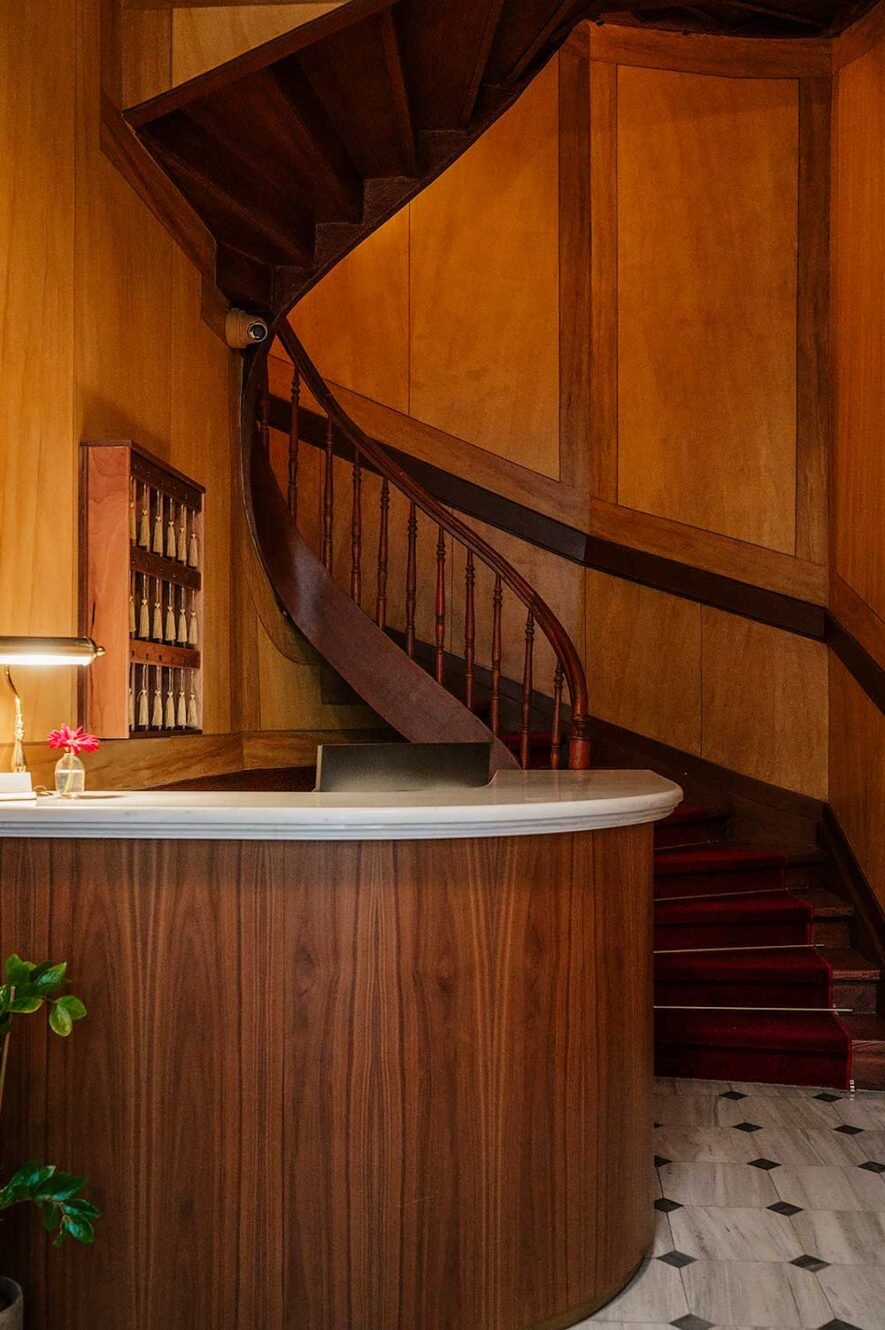

The interior retains its classical charm, paired with modern luxury and comfort. My room (Glint), while not large at 19 m², felt spacious enough thanks to its high, beautifully decorated ceiling.
What makes staying at Monument extra special is the wellness area on the lower floor, which you can reserve for private use as part of your stay. Don’t miss it! With a sauna and hammam all to yourself, it’s the perfect way to relax after a day of sightseeing. Want to know more? I wrote a full review about my stay at Monument.
Monsieur Didot (Kolonaki)
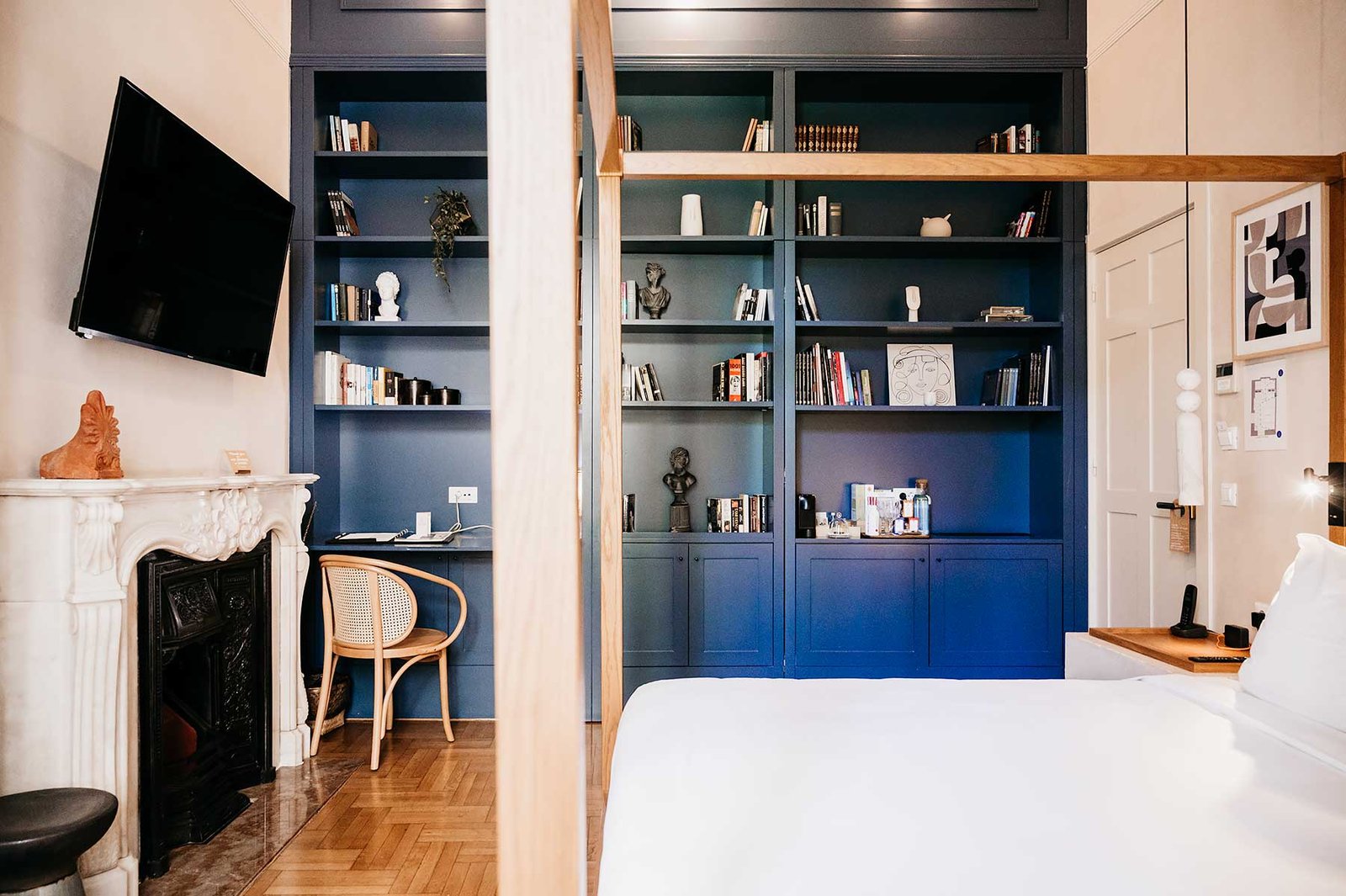
Monsieur Didot, located in the chic Kolonaki district, stood out to me immediately when searching for a stylish boutique hotel in Athens. The hotel is set in a stunning neoclassical townhouse from the early 20th century, featuring high ceilings, wooden floors, and beautifully modern furniture that complements the classic architecture.
The hotel opened in 2019, but the building has a rich history, having hosted guests such as John Lennon and Yoko Ono in the past.
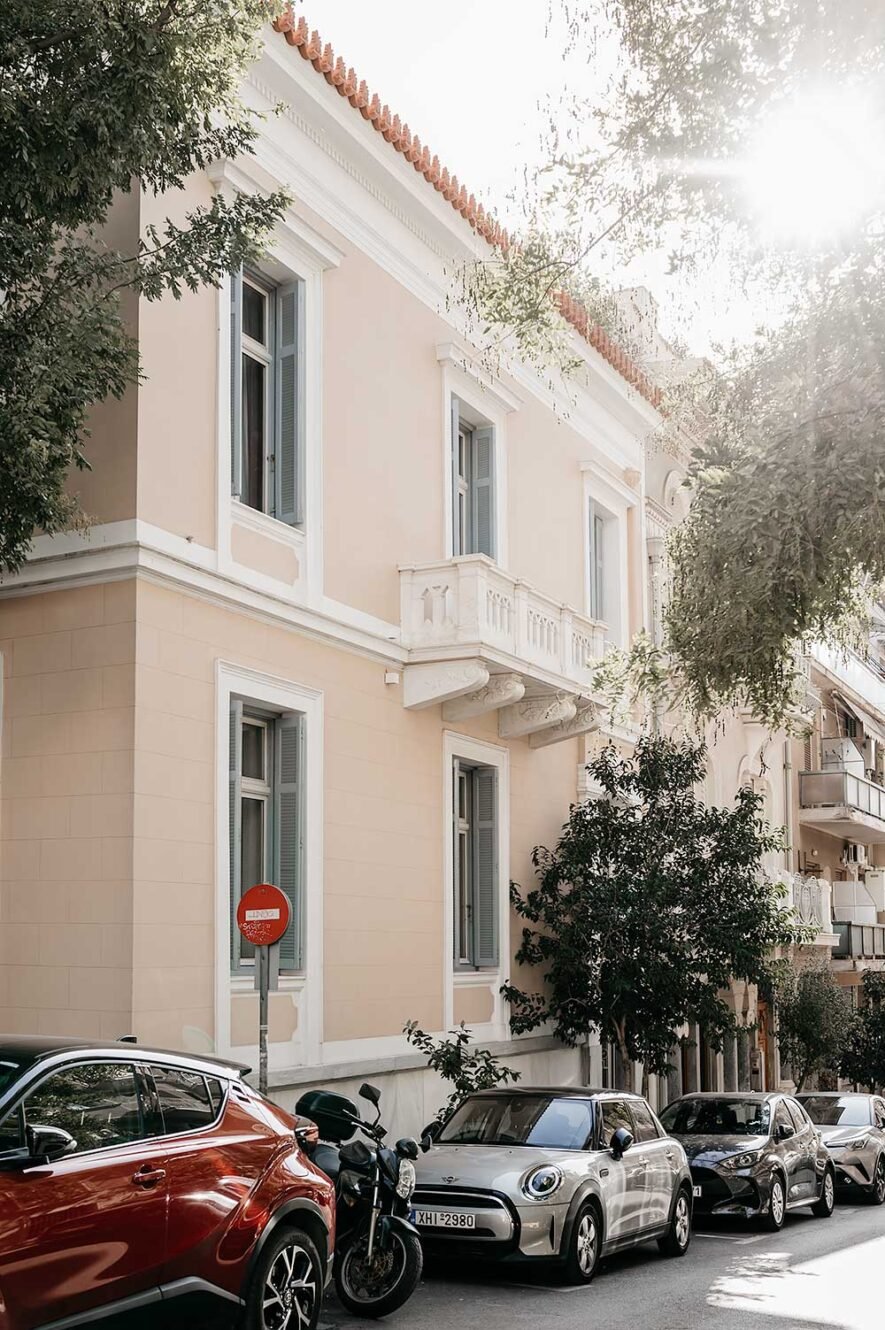

With only six rooms, booking early is essential. Each room and suite is unique, boasting minimalist design with luxurious touches. I stayed in “The Sonnet,” a bright, spacious room with a hidden bathroom cleverly tucked behind a blue bookcase.
There’s no central lobby, bar, or restaurant here. Breakfast is included in the room rate and is brought to your room in the morning.
Ergon House (Syntagma, on the border with Plaka)
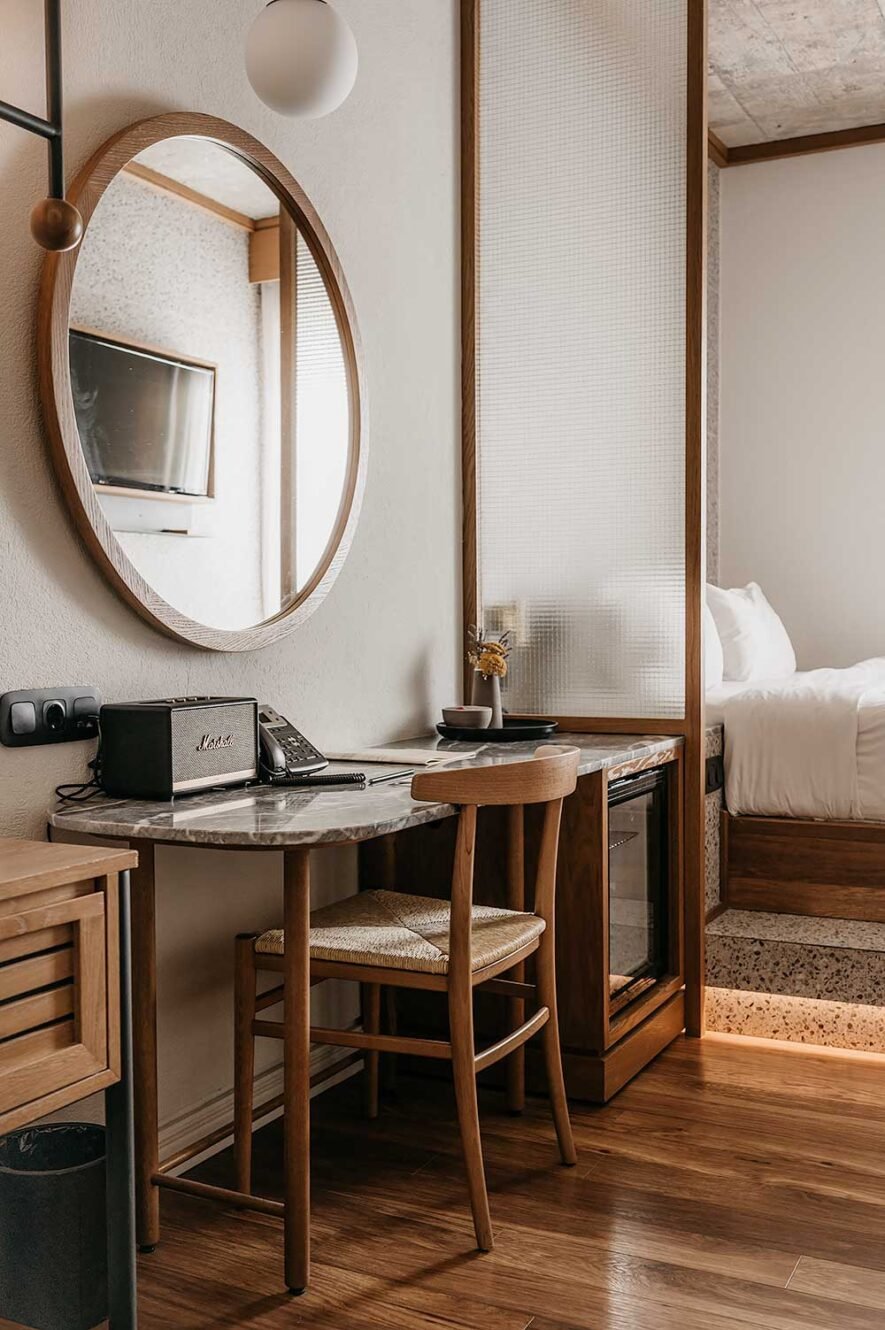
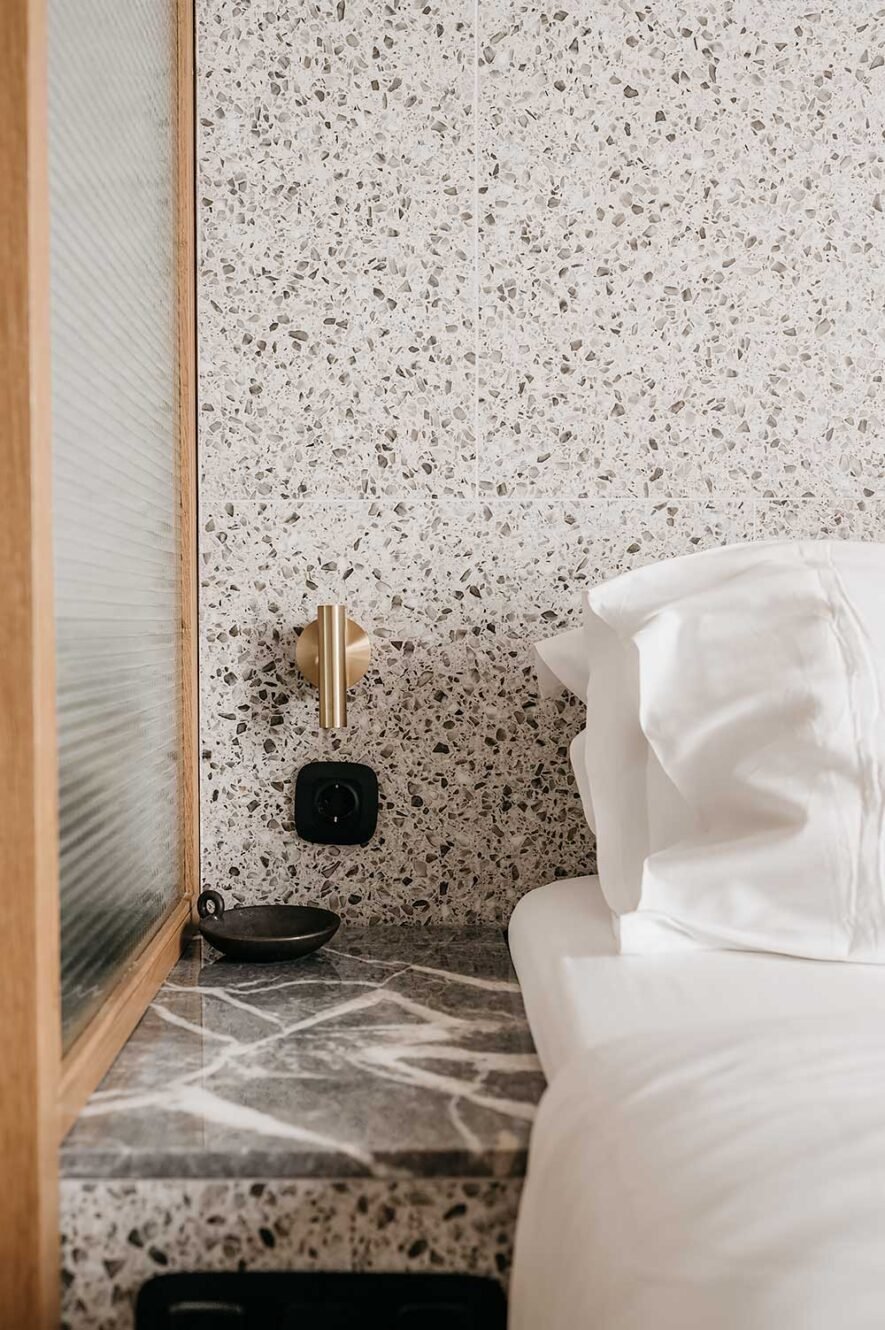
Ergon House is a must-visit for food lovers. On the ground floor, you’ll find a food hall, restaurant, deli, and market stalls selling fresh Greek products like fish, meat, and vegetables.
I spent one night at the Ergon House boutique hotel, located on the upper floors above the food hall. While the ground floor can be bustling, the atmosphere upstairs is calm and serene. The rooms are modern, with minimalist designs. Unfortunately, the incredible rooftop terrace wasn’t open during my stay, but even from my room, I had a great view of the Acropolis—simply unforgettable! As a welcome gift, I received some delicious items from the deli.
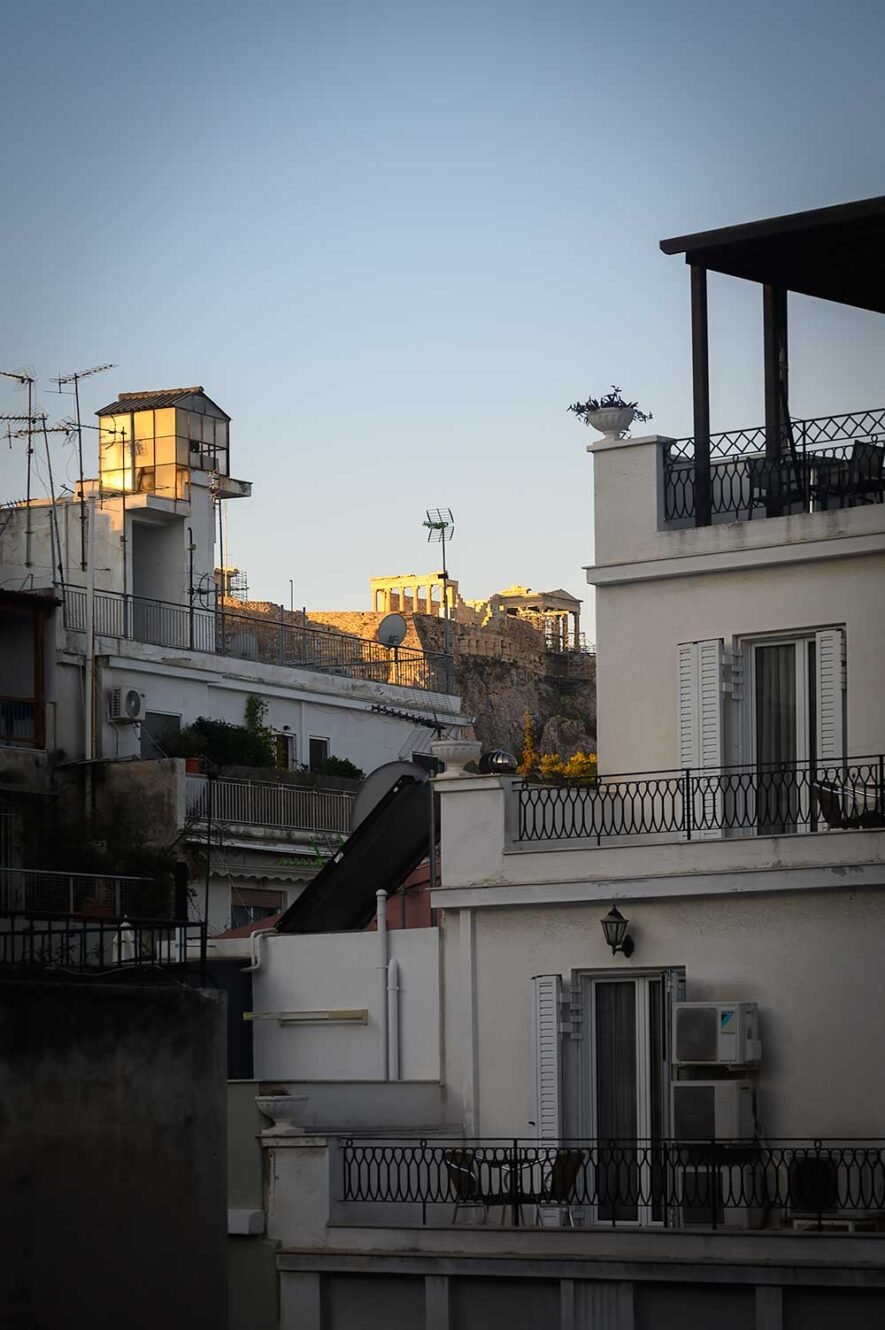

For breakfast, you don’t have to go far. Head downstairs to the restaurant, where you can choose anything you like from the delicious brunch menu, which is included in the room rate. It’s the perfect way to start your day in Athens!
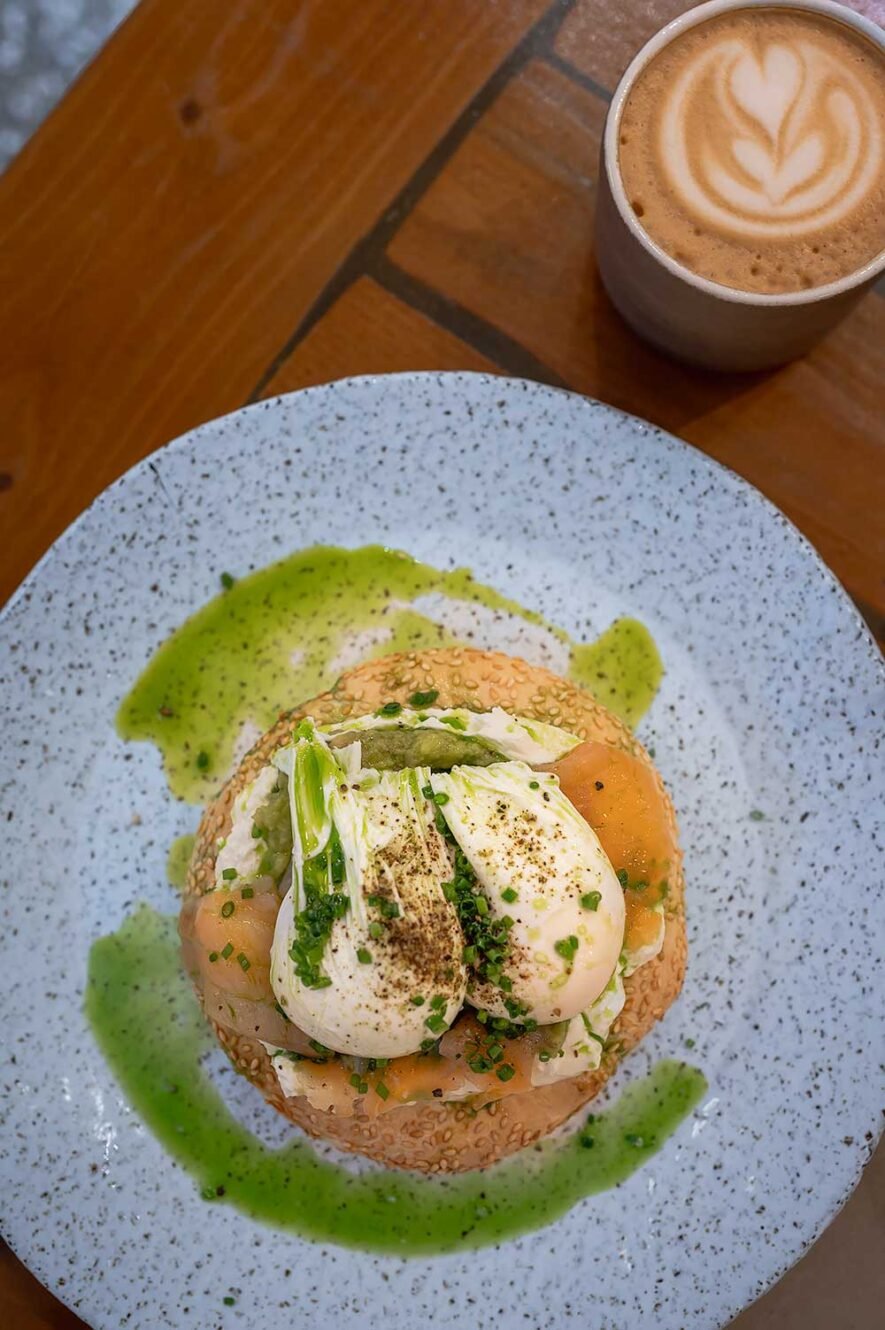

Around the corner is another beautiful Ergon hotel: Ergon Bakehouse Athens. Just as stylish and also showing their love for quality food, this time with an artisanal bakery.
This article contains affiliate links, which means that I may receive a small commission – at no additional cost to you – if you decide to make a purchase through these links. More information about how I use affiliate marketing can be found in the Disclaimer.

